Our Blog - Paris 2015 - Day 5
This is one of the few tourist things that we did, and for some reason, Tom wanted to go to Versailles (for like the 4th time). The Chateau de Versailles or Palace of Versailles is about 20 kilometers outside of Paris and started out as a country house and was transformed to the center of political power in France until 1789. Versailles is famous not only as a building, but as a symbol of the system of absolute monarchy of the Ancien Regime. The original brick and stone hunting lodge was built by Louis XIII in 1623. It was expanded into a royal palace by Louis XIV including the addition of the landscaped gardens (designed by Andre Le Notre, who started as a gardener, including being the head gardener at the Tuileries).
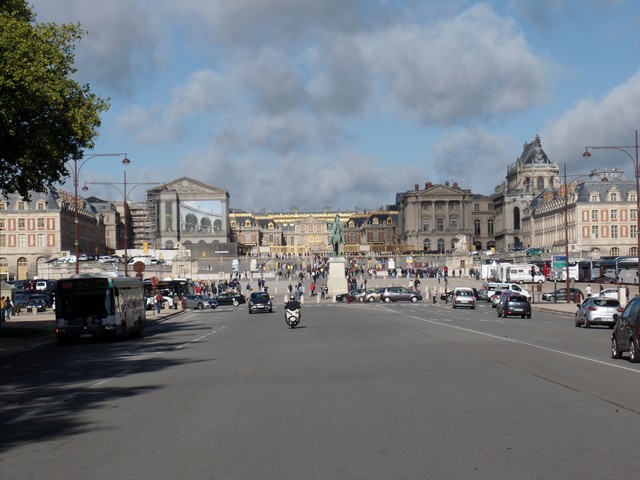
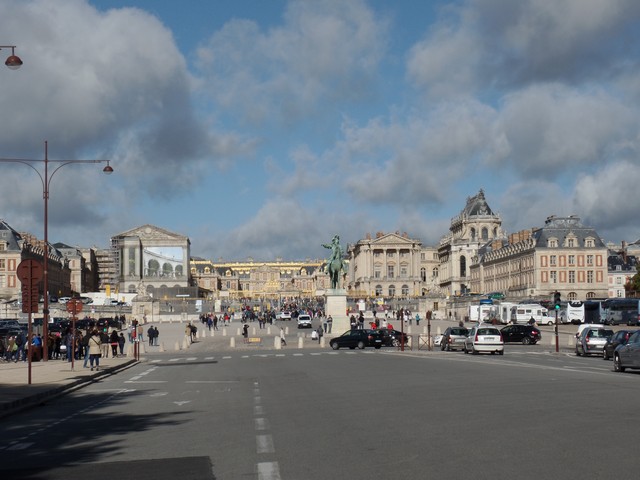
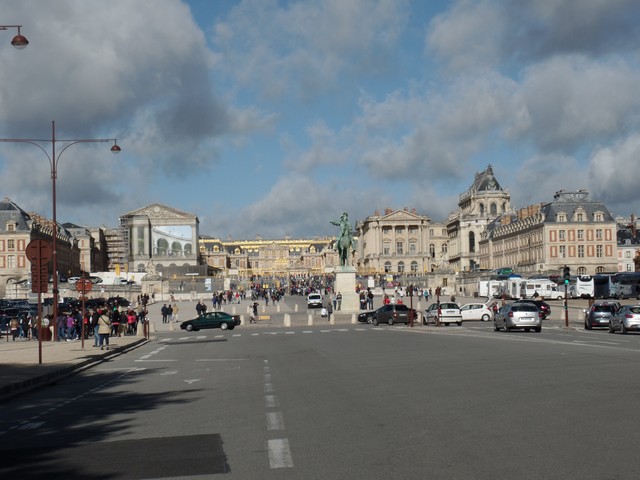
The bronze equestrian statue of Louis XIV on the Place d'Armes in front of the Palace of Versailles, designed by Pierre Cartellier. It was commissioned by Louis XVIII for the Place de la Concorde. When Cartellier died in 1831, only the horse was completed. The statue of the king on top of the horse is the work of Louis Petitot, the son of Cartellier.
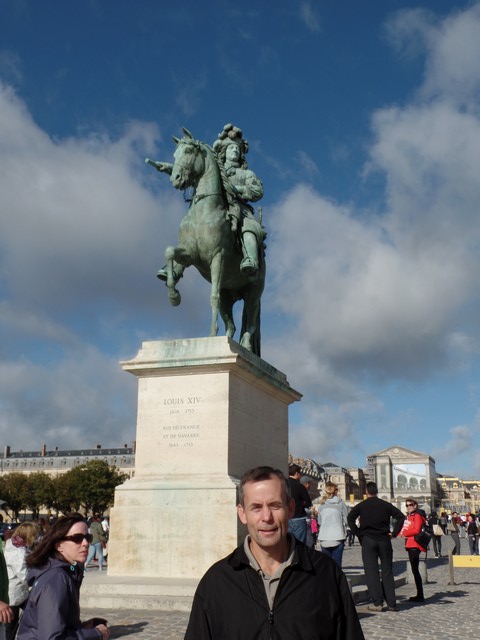
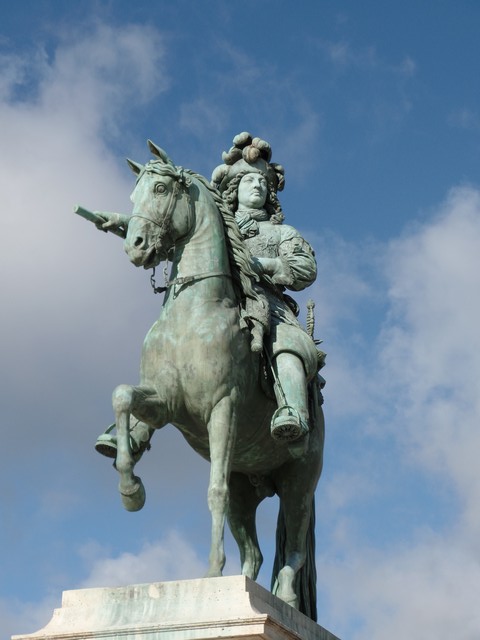
We took lots of pictures in the courtyard while waiting in line to get inside. The one thing that catches your eye, after just the overall chateau, is the gold. In 2009, the golden gate to the palace was replaced, more than 200 years after it was torn down during the French Revolution. It took 2 years of work to create the replica of the original wrought iron and gold leaf gate. A total of 100,000 gold leaves have been crafted into the shapes of fleur de lys, crowns, masks of Apollo, cornucopias and the crossed capital Ls representing the Sun King. The buildings are also all trimmed in gold leaf, which shines even in the overcast skies that we had the day we visited.
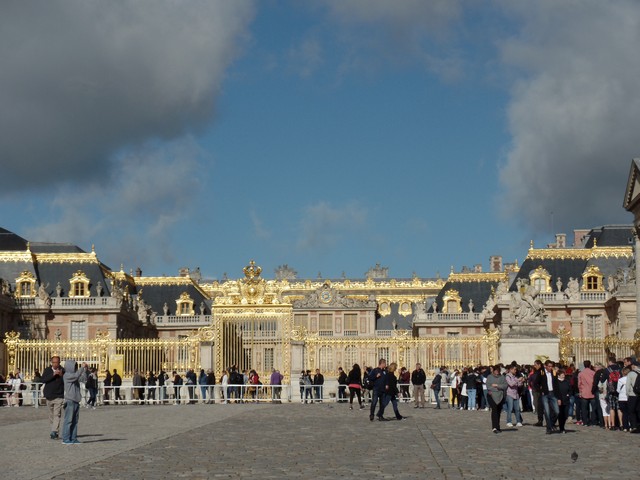
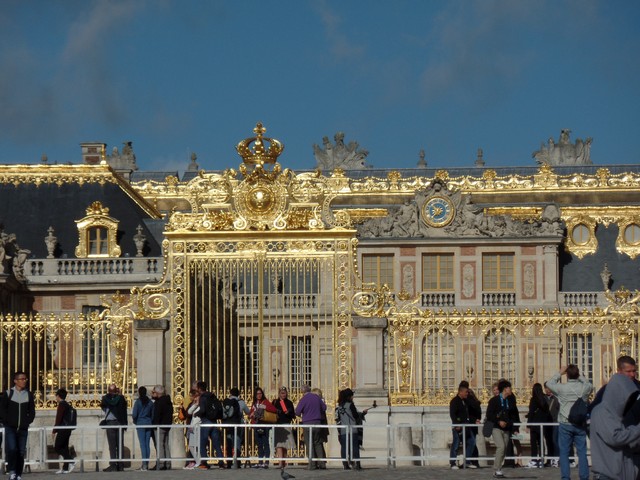
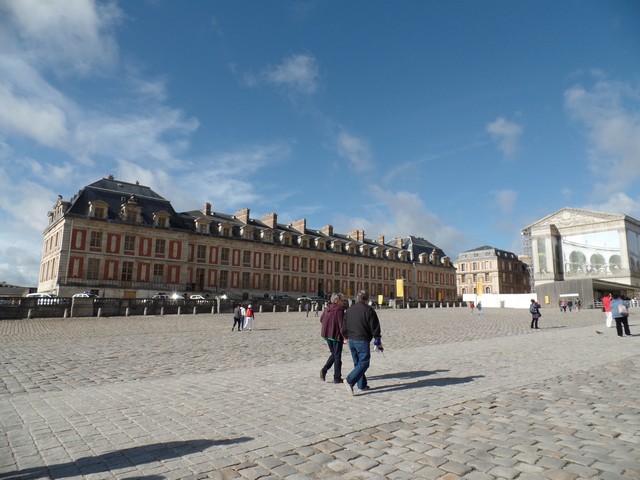
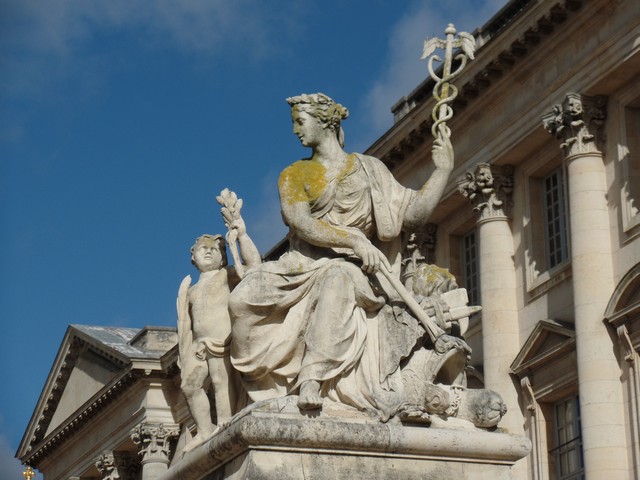
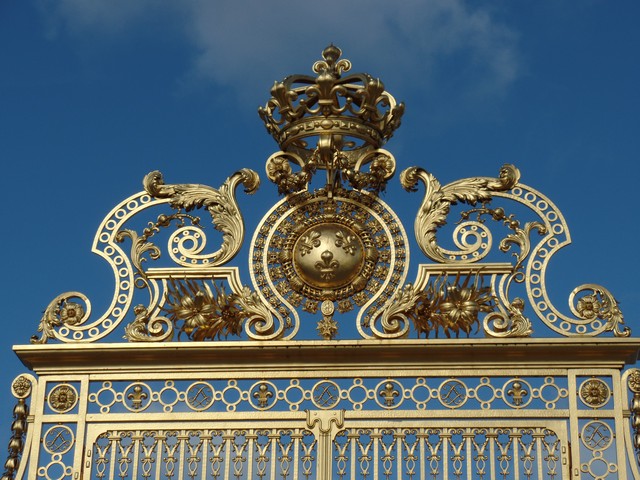
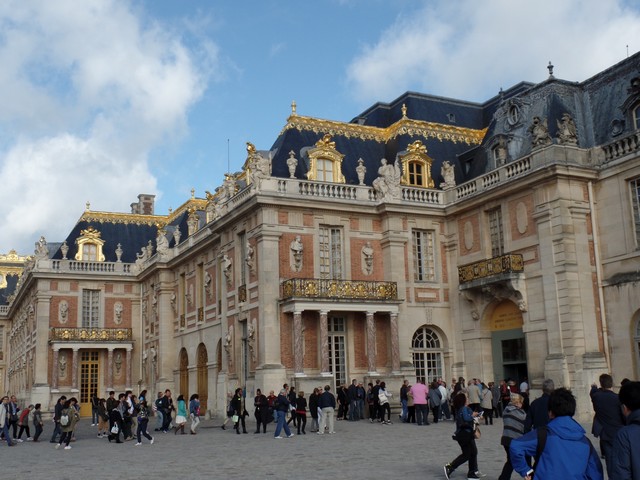
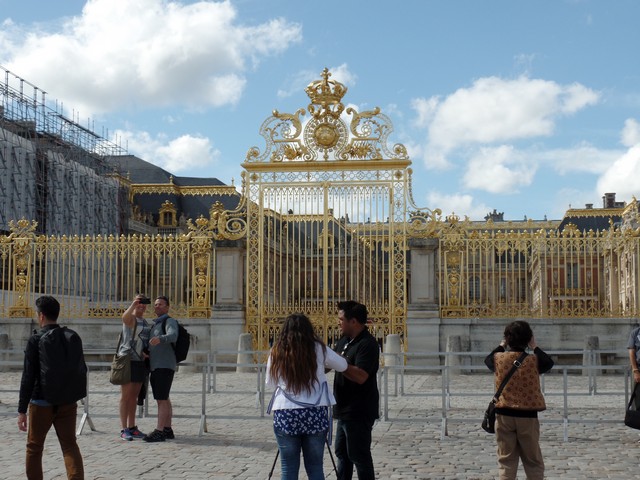
This section/wing of the chateau is the Museum of the History of France, which was created in 1837 by King Louis-Phillipe. The writing on the building dedicates the museum "To all the glories of France"
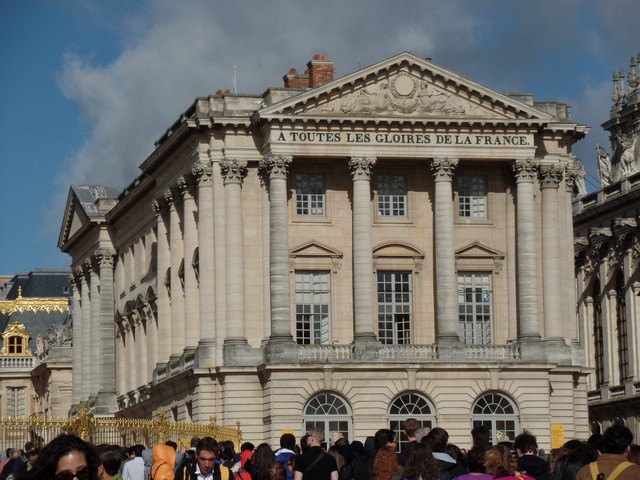
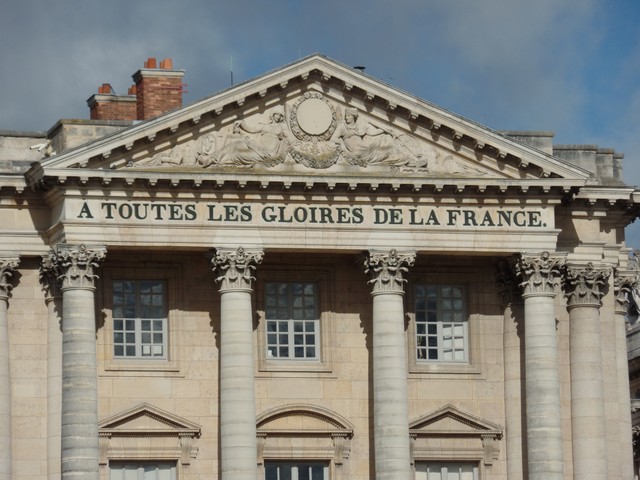
Next to the museum is the Royal Chapel. This is the 5th chapel that is at the Palace and it was the focal point of Louis XIV's last renovations. It was to become the largest of the royal chapels at Versailles. You can see how the vaulting disturbs the severe horizontality of all of the other buildings. I'll have a few pictures of the interior of the chapel a little later.
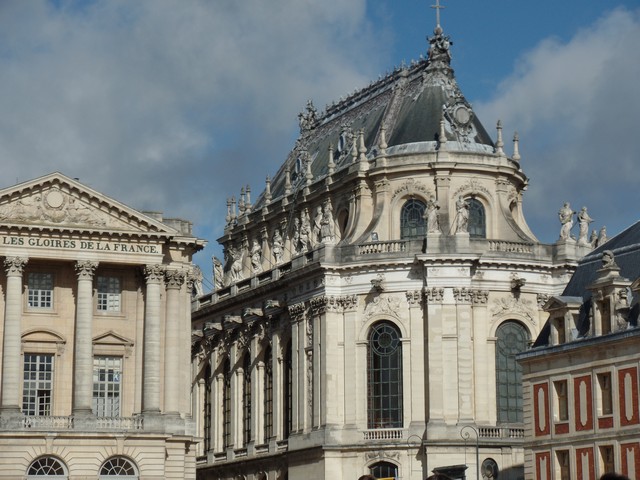
In the inner courtyard, we get a closer look at the buildings and their detail.
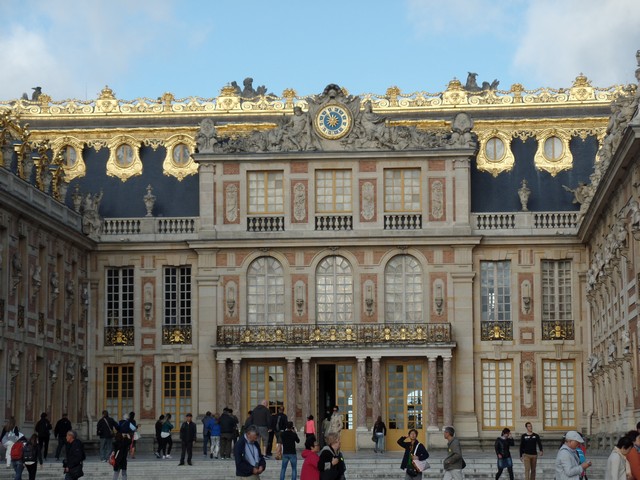
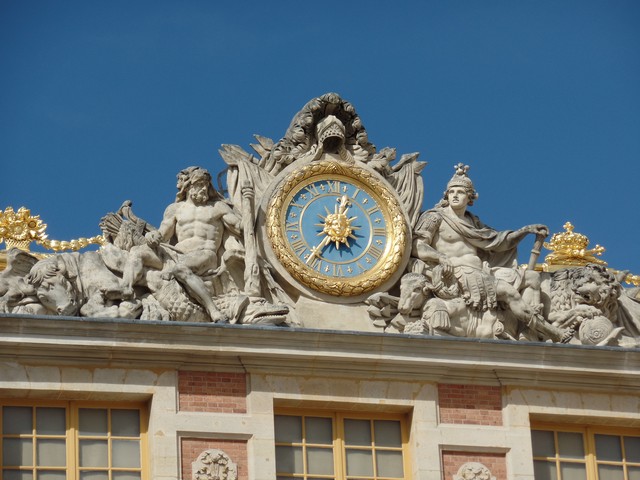
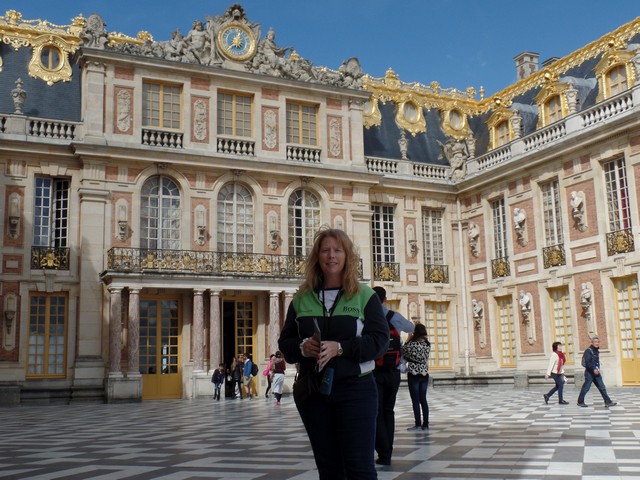
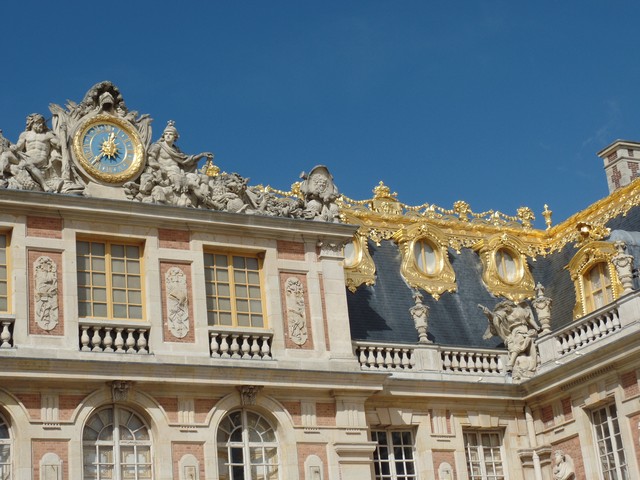
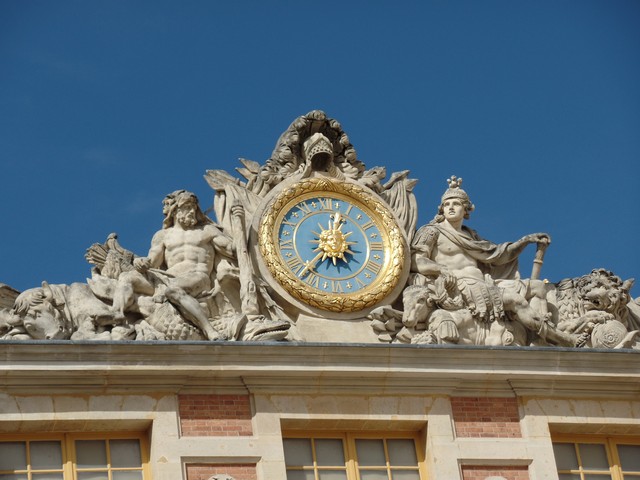
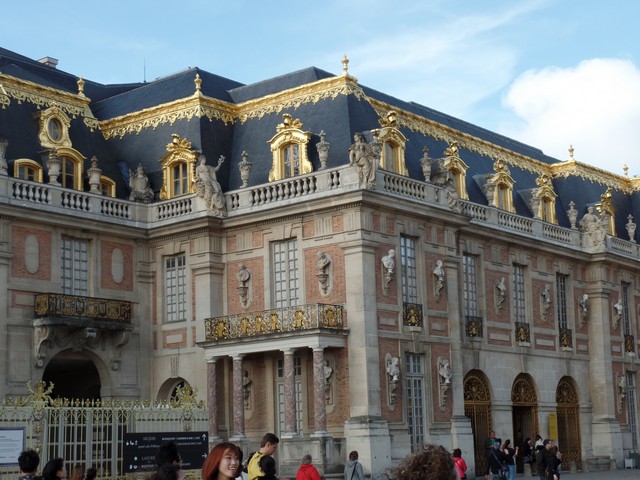
The first thing we saw when we entered was actually the Royal Chapel. As I mentioned, this was the 5th chapel at Versailles. It was consecrated in 1710 and dedicated to Saint Louis, the patron saint of the Bourbons. The floor of the chapel is inlaid with polychromatic marbles, and at the foot of the steps leading to the altar is the crowned monogram of an interlaced double "L" alluding to Saint Louis and Louis XIV. The ceiling of the nave represents God the Father bringing the promise of redemption to the world and was painted by Antoine Coypel; the half-dome of the apse is decorated with Charles de la Fosse's The Resurrection of Christ; and, above the royal tribune is Jean Jouvenet's The Descent of the Holy Ghost upon the Virgin and the Apostles. It was in this chapel that Louis XV's son (the dauphin Louis) married the Infanta Marie-Therese d'Espagne in 1745 and the future Louis XVI of France married Marie-Antoinette in 1770.
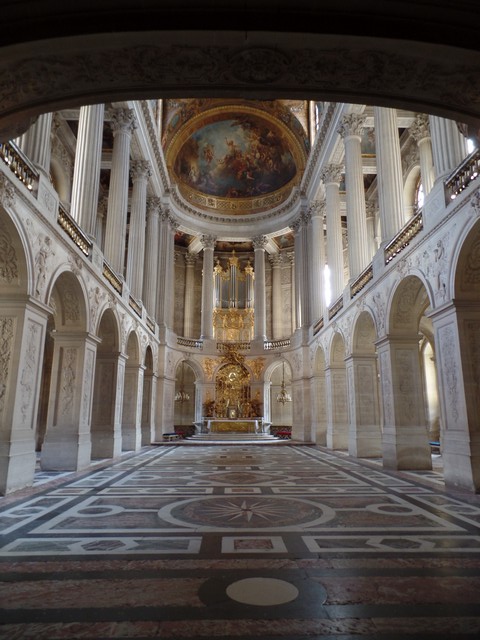
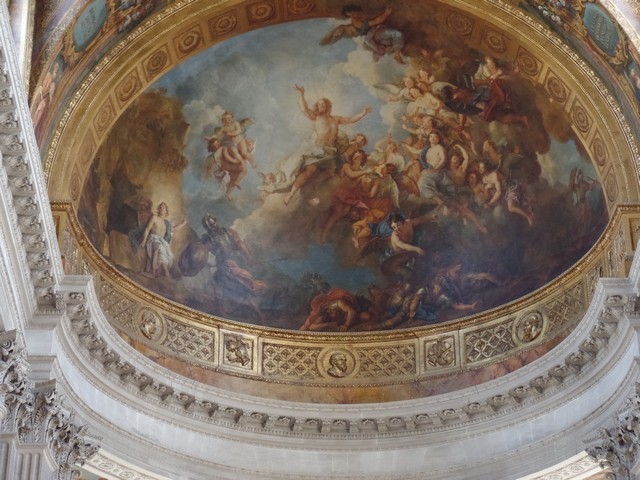
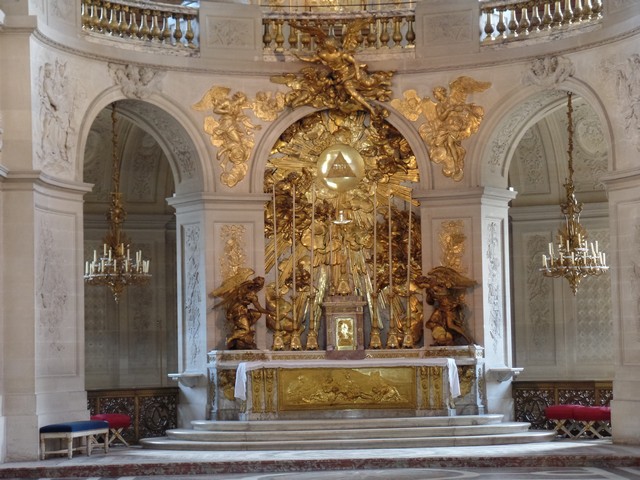
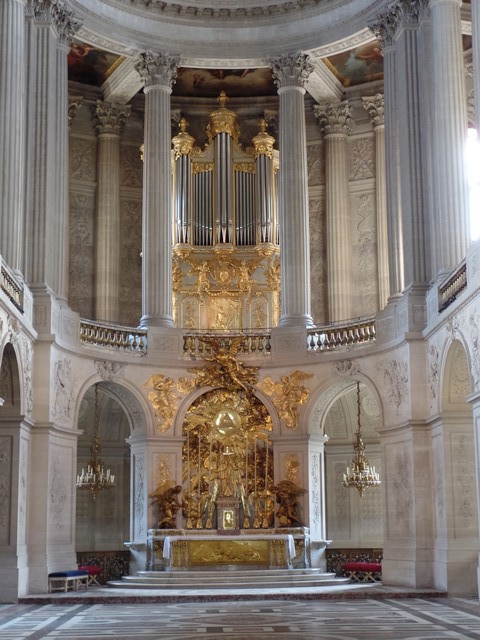
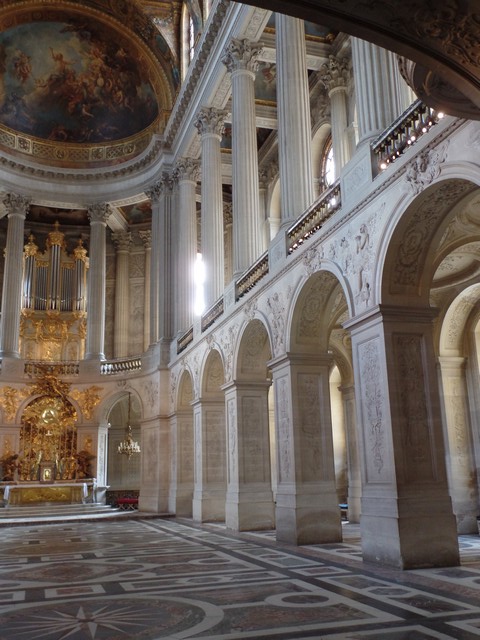
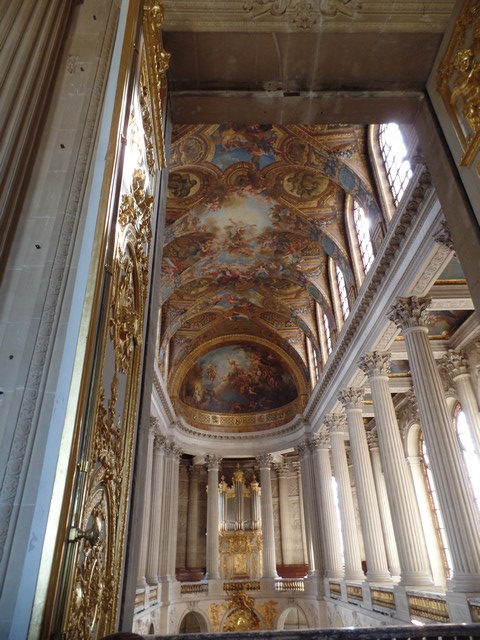
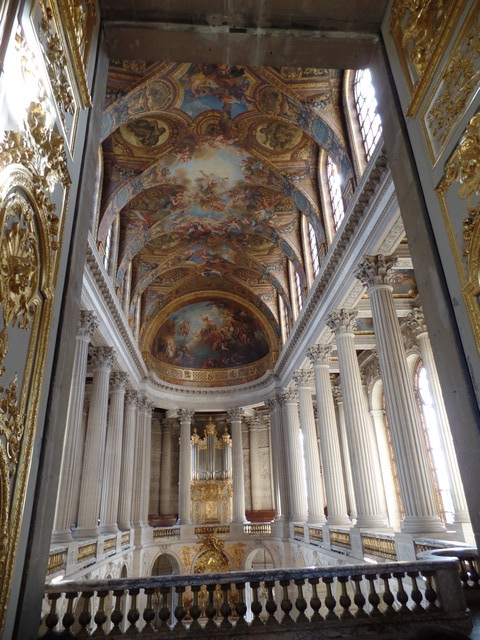
Down this long hallway are these statues lined up. Doesn't Tom look so amused? He hates when I try to take pictures of him.
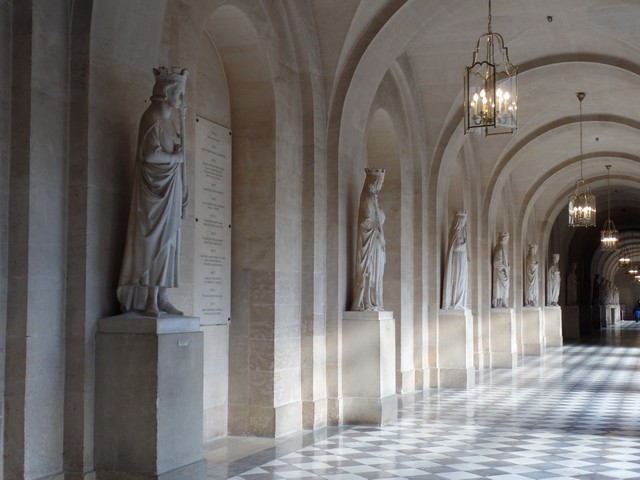
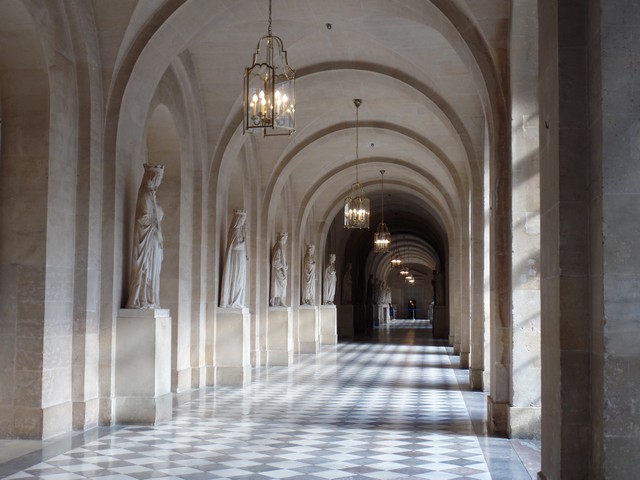
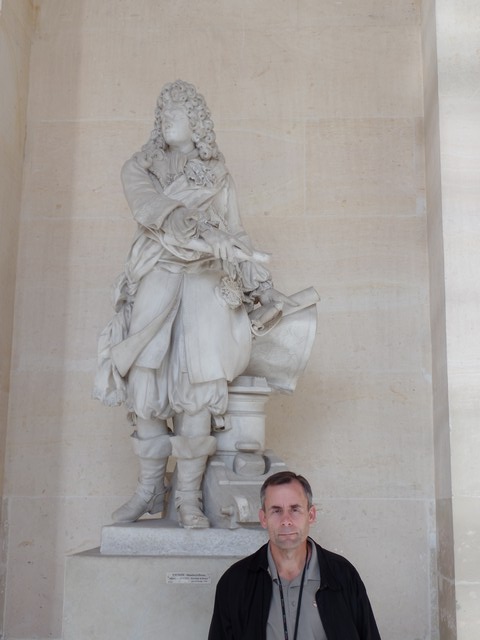
This is a picture of a painting of the Royal Chapel as seen from the royal courtyard.
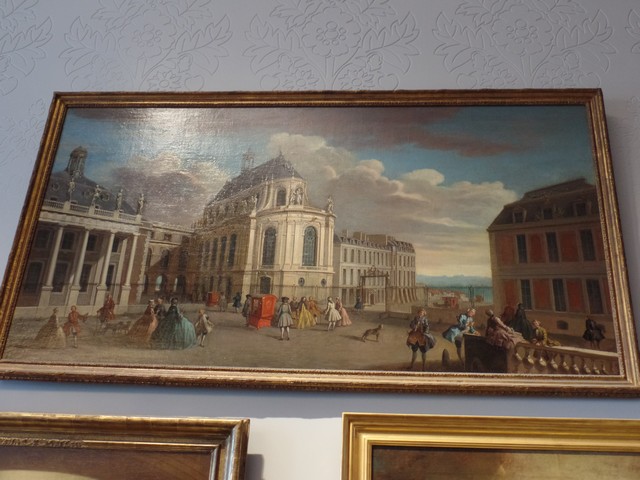
We started going through the Kings Grand Apartment, which were 7 rooms that were used for official duties (so not quite an apartment). The rooms are decorated like Italian palaces were at the time. The first room is the Hercules Salon, which was the last to be created, at the end of Louis XIV's reign. The large painting (I think) is called The Meal at the House Of Simon, and it was painted in Venice in 1570 by Veronese. It was given to Louis XIV so that the king would support him against the Turks.
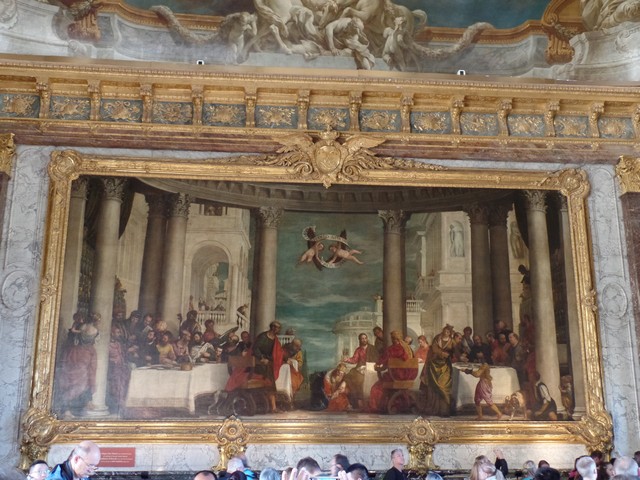
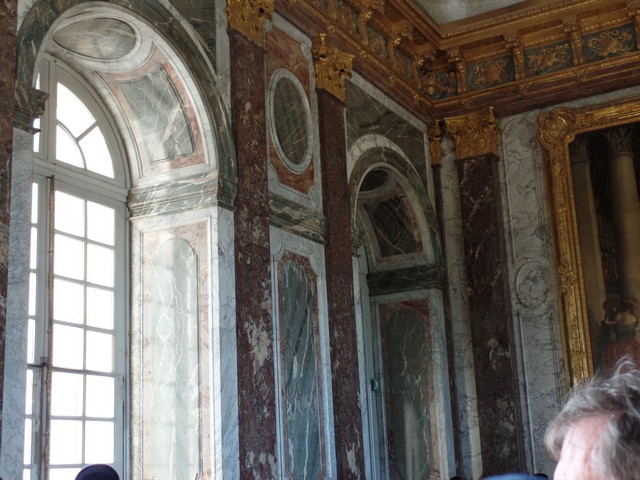

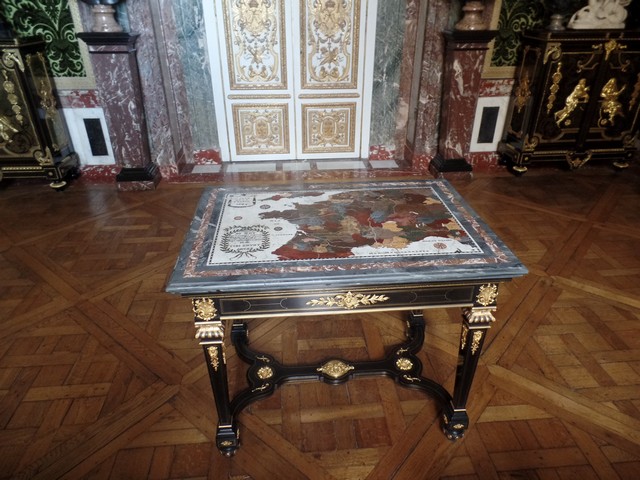
This is in the Venus salon, and the decorations show Venus depicted on the ceiling with the features of the Goddess of Love. Historians believe that the moldings and statues that depict ancient heroes and the wedding of Alexander to Roxana evoke different points in the life of Louis XIV.
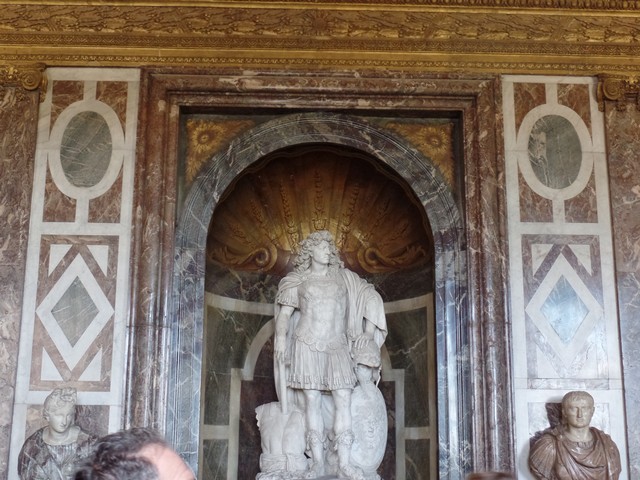
We grabbed this picture of part of the gardens as we walked by a window.
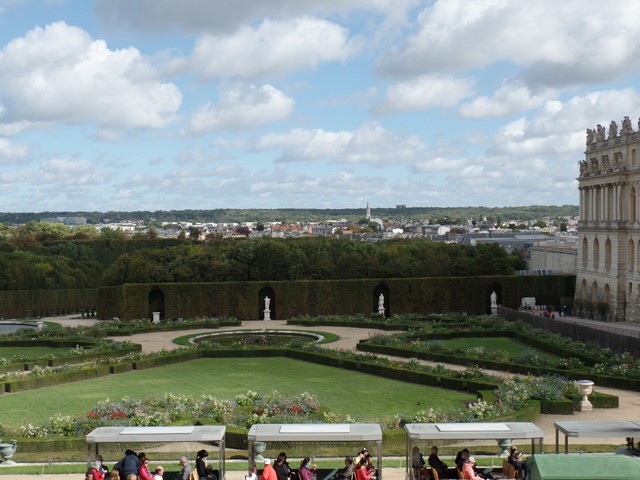
The Apollo Salon, dedicated to the God of the Sun, the Arts and Peace and with whom Louis XIV identified, was once the most sumptuous room in the Grand Apartments and has had the most prestigious destiny: from the King's Grand Bedchamber starting in 1673, it became the Throne Room in 1682.
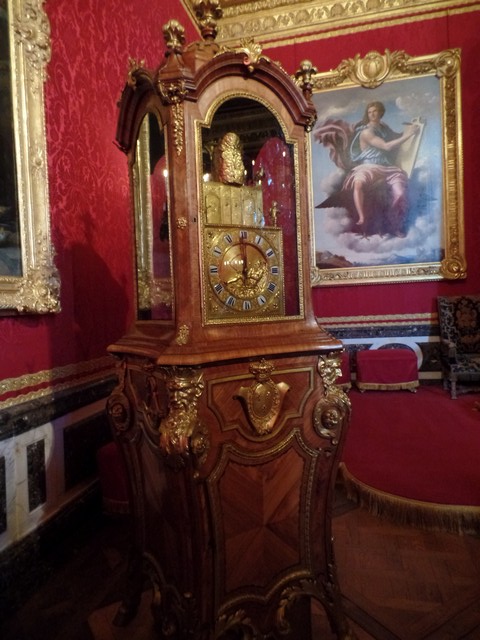
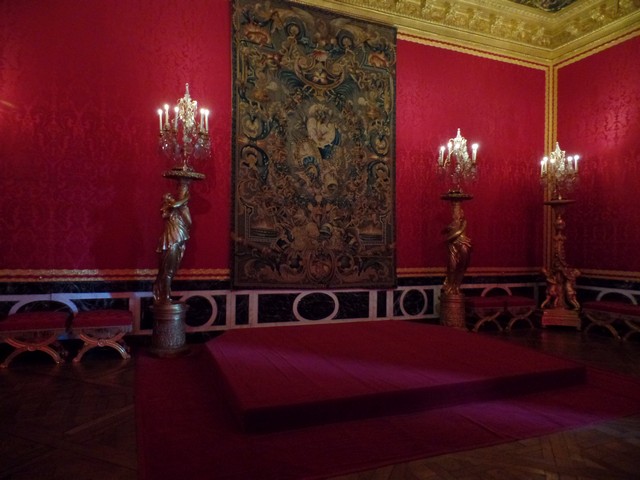
The Salon of War is another masterpiece by Le Brun, which was started in 1678 and finished in 1786. The overall decor depicts the victories of France and leads up to the long-longed for peace at Nijmegen. Le Brun chose marble to adorn the walls and six trophies - not to mention the bronzed carvings - are the main features of the decoration. The salon is placed as the very last room of the King's Grand Apartments. Louis XIV is strongly represented by a large relief of the Sun King himself on horseback obviously defeating his enemies - this was another way to underline the glorious monarch.
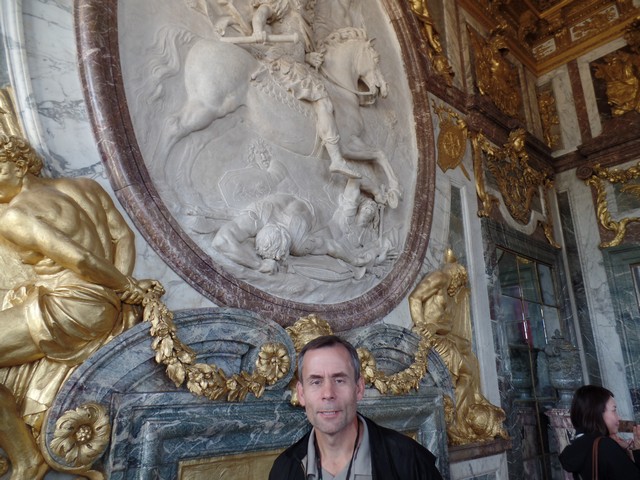
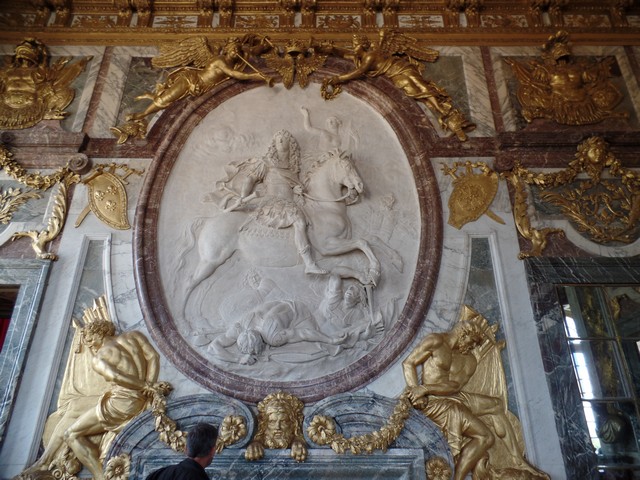
Probably the most famous room in the chateau, the Hall of Mirrors. The gallery's seventy-three meters glorifies the political, economic and artistic success of France. Political success is demonstrated by thirty compositions in the arch painted by Le Brun, which illustrate the glorious history of Louis XIV in the first eighteen years of his government, from 1661 until the Peace of Nijmegen. The principal feature of this hall is the seventeen mirror-clad arches that reflect the seventeen arcaded windows that overlook the gardens. Each arch contains twenty-one mirrors with a total of 357 used in the decoration. The arches themselves are fixed between marble pilasters whose capitals depict the symbols of France. These gilded bronze capitals include the fleur-de-lys and the Gallic cockerel or rooster.
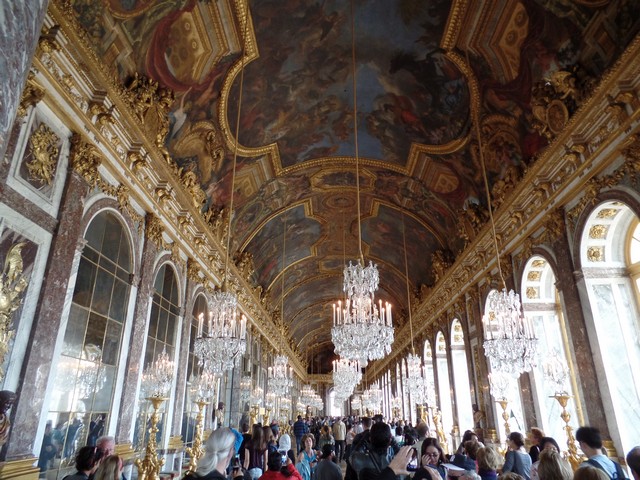
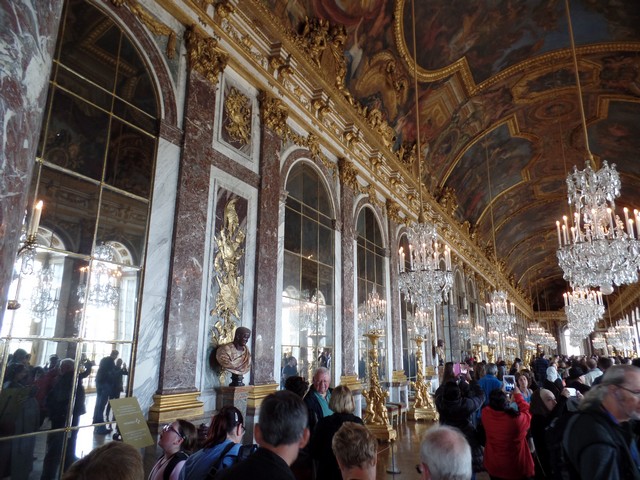
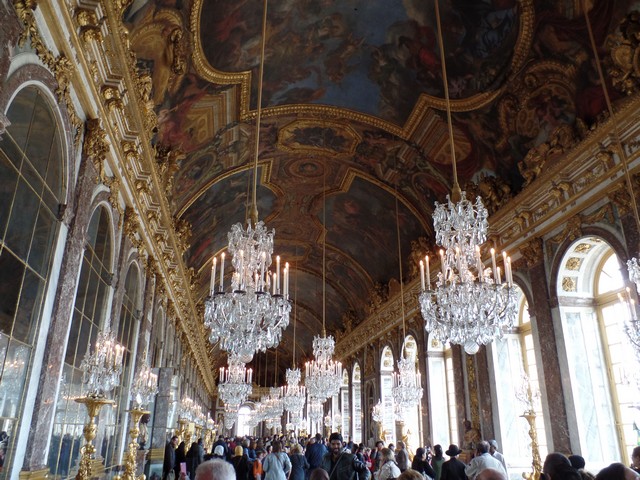
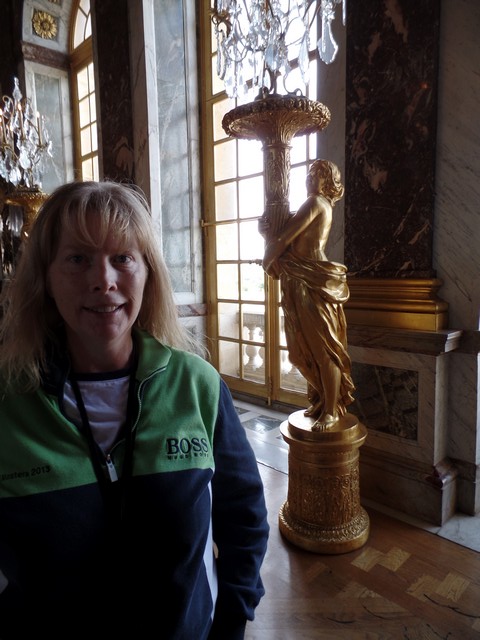
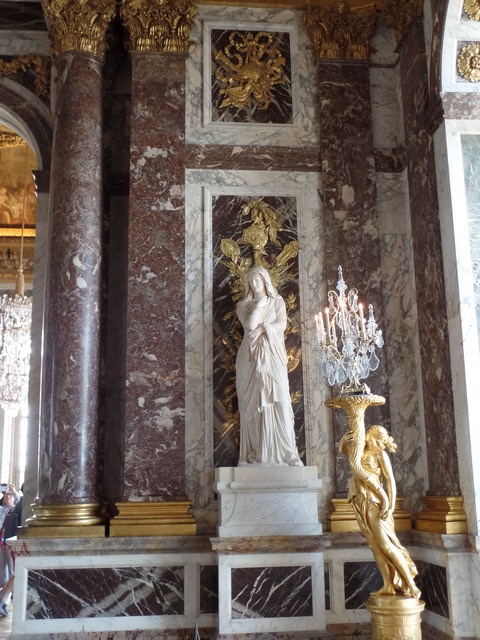
Off of the Hall of Mirrors is the Kings bedchamber, which he moved in 1701 to face the rising sun. There is an alcove for the bed, with a carved and gilded wood balustrade separating the alcove from the rest of the chamber and over the bed a stucco allegory of France watching over the King in his slumber by Nicolas Coustou. On the mantelpiece installed during the reign of Louis XV stands a bust of Louis XIV by Antoine Coysevox.
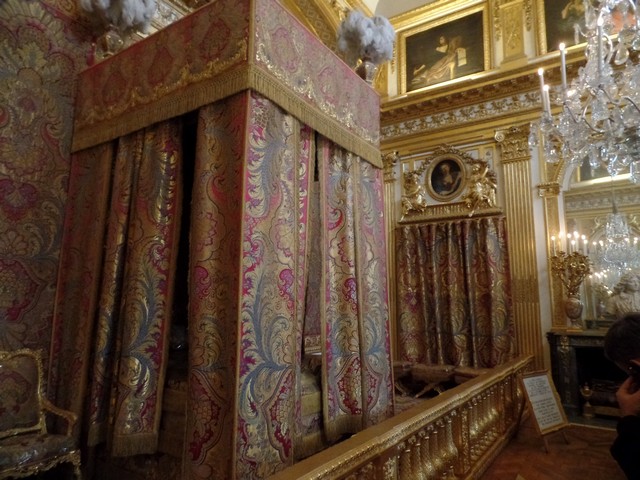
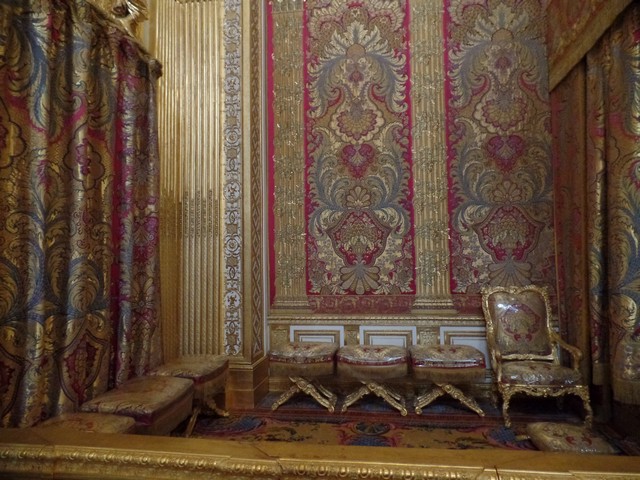
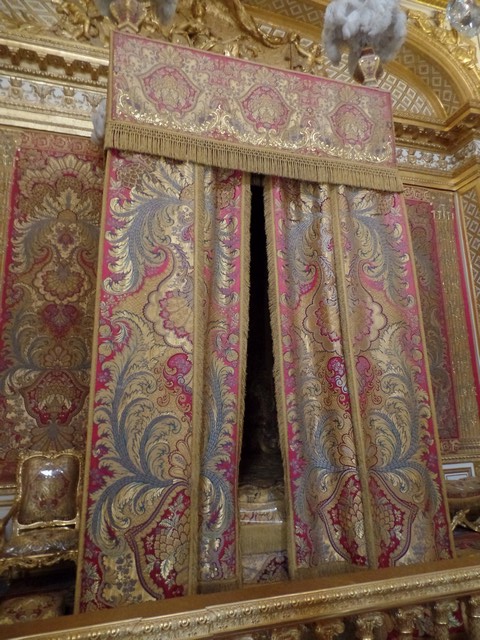
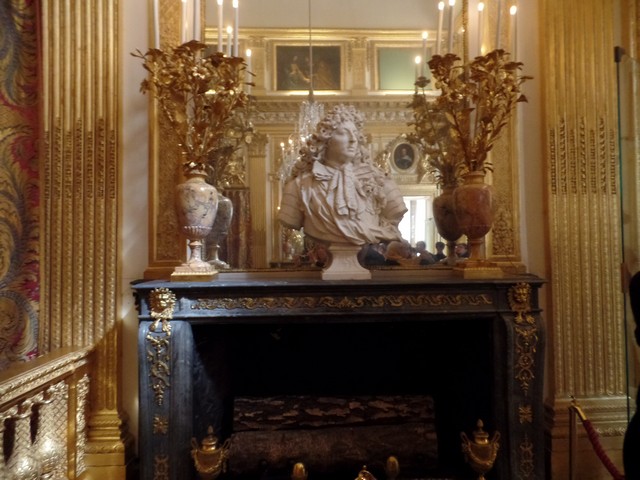
Next to the King's Chamber is the Council Study. This did not take on its present form until 1755, under Louis XV, when it was created by combining two rooms, the King's Study where Louis XIV held his ministerial councils for financial and state matters and the Terms Study, a more intimate room to which Louis XIV retired with his family or inner circle in the evenings after supper. The study was decorated in sumptuous wood panelling featuring new decorative motifs (trophies, attributes of the army, navy and justice etc) carved by Antoine Rousseau from drawings by Ange-Jacques Gabriel; magnificent works of art commissioned by Louis XV and Louis XVI now adorn it: a rococo clock (1754), a porphyry bust of Alexander the Great and two vases depicting Mars and Minerva in Sevres porcelain and chased bronze by Pierre-Philippe Thomire (1787).
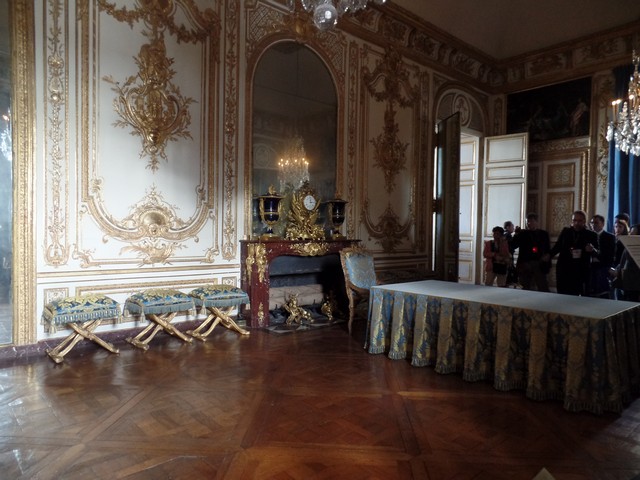
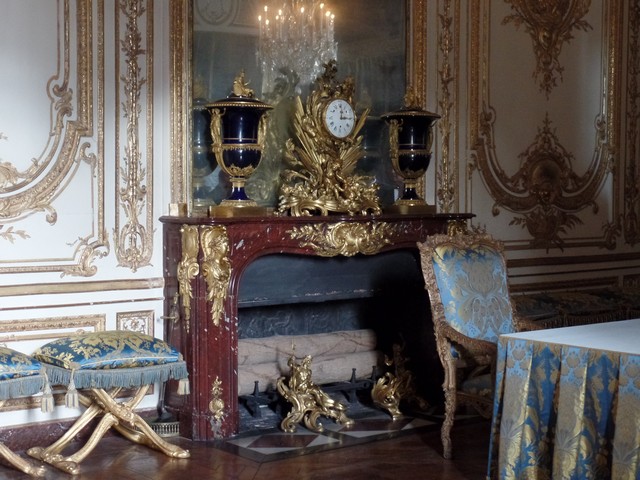
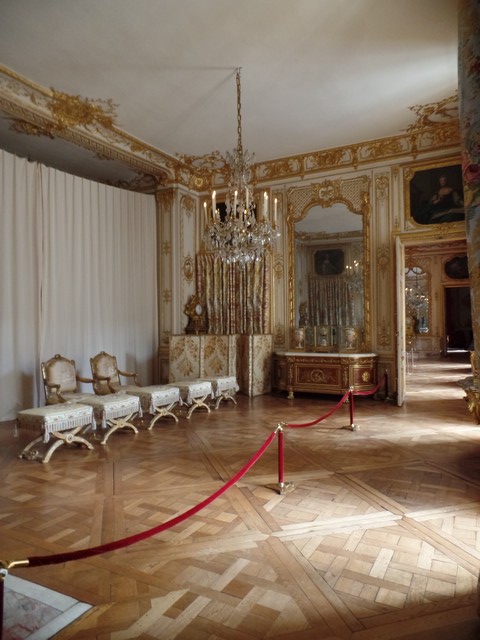
Let me just say ... it is good to be the queen :-) This is the queen's apartment. The first room is her bedchamber. The chamber is the main room of the apartment, the one where the Queen spent most of her time. She slept here, often joined by the King. This is also where nineteen royal children were born. The decor retains the memory of the three queens who occupied the room: the compartmentalization of the ceiling dates back to Queen Marie-Therese, but the monochrome paintings by Boucher were produced for Marie Leszczinska, as were the wood panels. All these elements were preserved in the time of Marie-Antoinette who only replaced the furniture and the fireplace.
When the palace was invaded by the rioters in 1789, Marie-Antoinette managed to escape from the rioters through a small door in the back of the room, which gave access to the Queen's internal apartments (about a dozen small rooms reserved for her private life and her servants). During the Revolution the palace was not looted, but the furniture was sold at auctions which lasted a whole year. Some items were found, such as a Schwerdfeger jewel case and the fire screen.
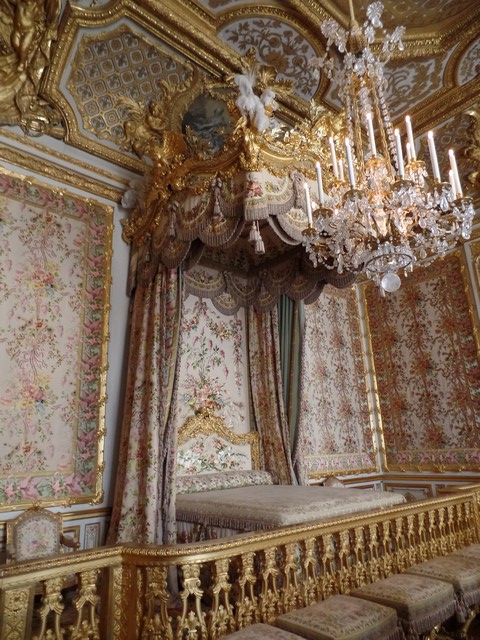
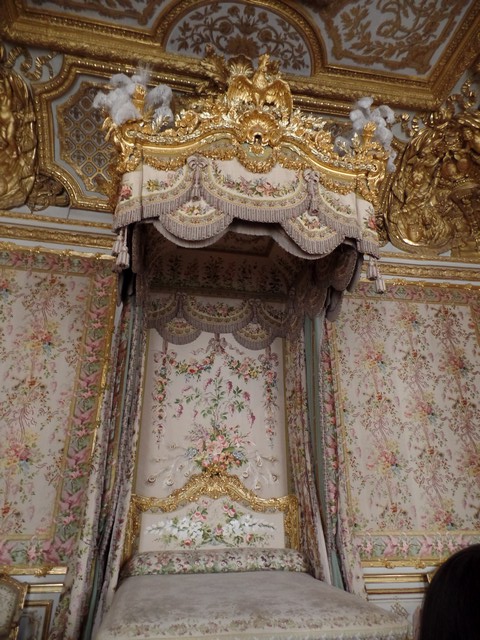
This is a famous painting called The Coronation of Napoleon although, in fact, it is Napoleon crowning Josephine. It is 33 feet wide and 20 feet tall. It depicts the coronation of Josephine in Notre Dame. In the painting, Napoleon I is standing, dressed in coronation robes similar to those of Roman emperors. Josephine de Beauharnais is kneeling in a submissive position, as called for in the French Civil Code. She received the crown from the hands of her husband, not the pope. Napoleon mother, Maria Letizia Ramolino, was placed in the stands although she did not attend the ceremony to protest the friction of Napoleon with his brothers Lucien and Joseph. Joseph is also shown in the painting although he also did not attend due to the argument with Napoleon.
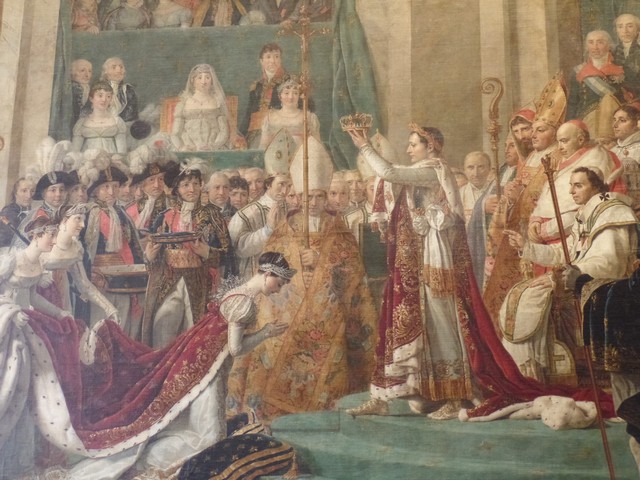
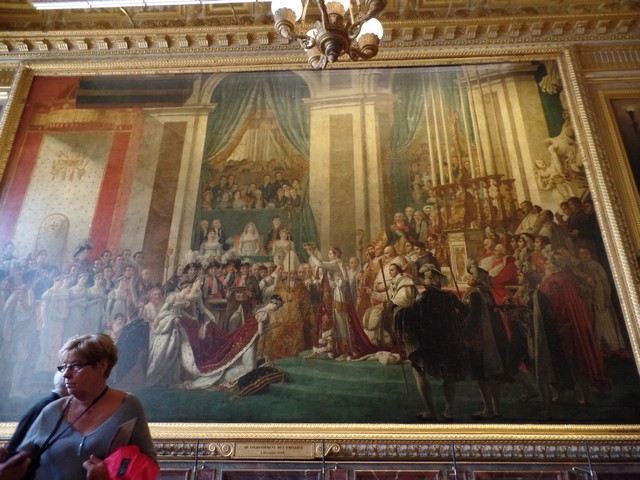
The grand staircase is, well, quite grand!
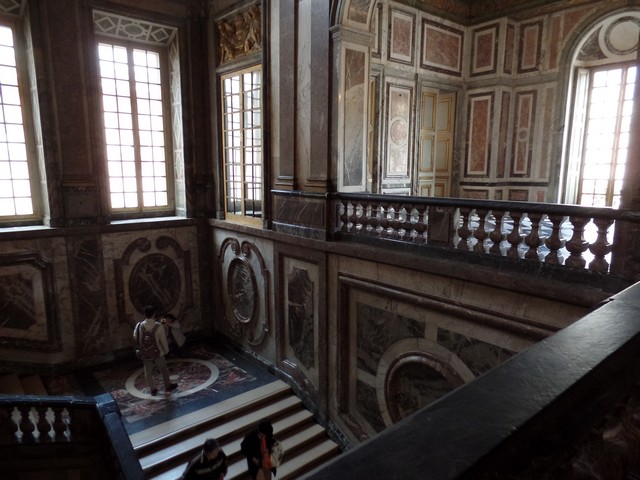
Down the staircase, we reach the apartments of the "Mesdames", or the 6 daughters of Louis XV. Two of the daughters, Victoire and Adelaide, never married and lived there from 1752 until the revolution. The first room was the interior chamber of the Count of Toulouse from 1692 to 1724, the Countess of Toulouse from 1724 to 1750 and then Madame Adelaide from 1752 to 1753. The bedroom of Madame Sophie from 1755 to 1767, it then became the princess' first antechamber, then in 1769 that of Madame Victoire. Marie Louise Therese Victoire was the seventh child and fifth daughter of King Louis XV of France and his Queen consort Maria Leszczynska. She outlived eight of her nine siblings, and was survived by her older sister Madame Adelaide by less than a year. She was born at Versailles but then sent away to an Abbey until she was 15, at which time she returned. When Versailles was stormed during the French Revolution, Victoire and her sister Adelaide went to Italy in 1791 but moved around often, going to Naples and Corfu before ending up in Trieste. Victoire died there and Adelaide died a year later in Rome.
Victoire had several rooms in her apartments including a library.
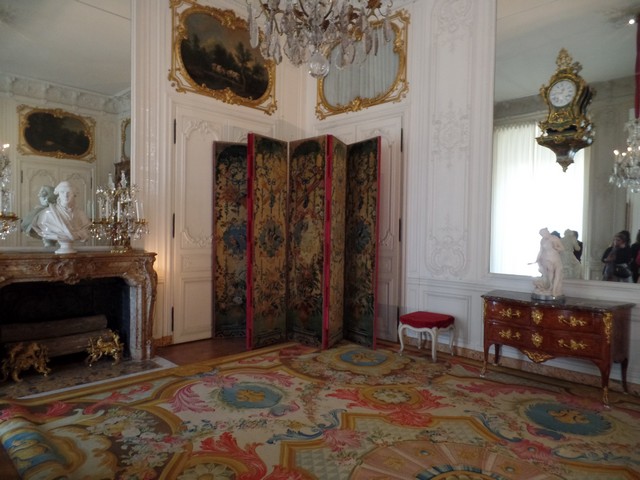
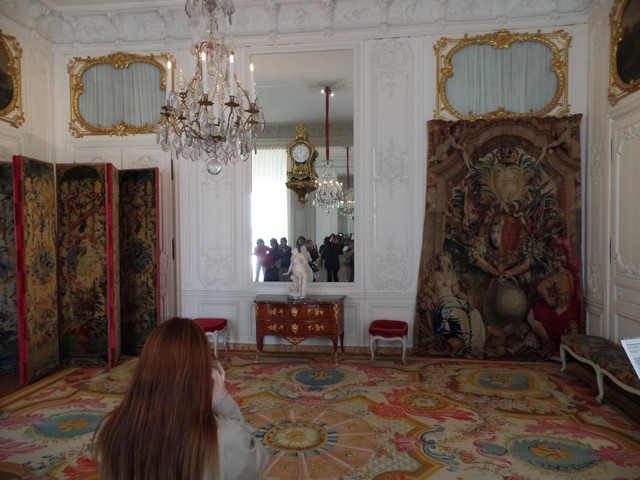
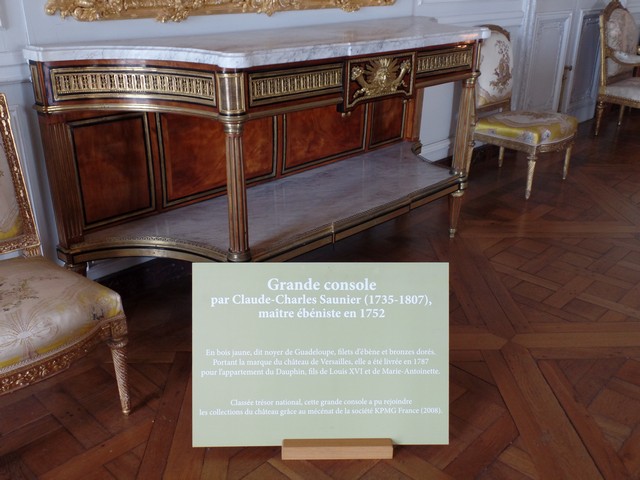
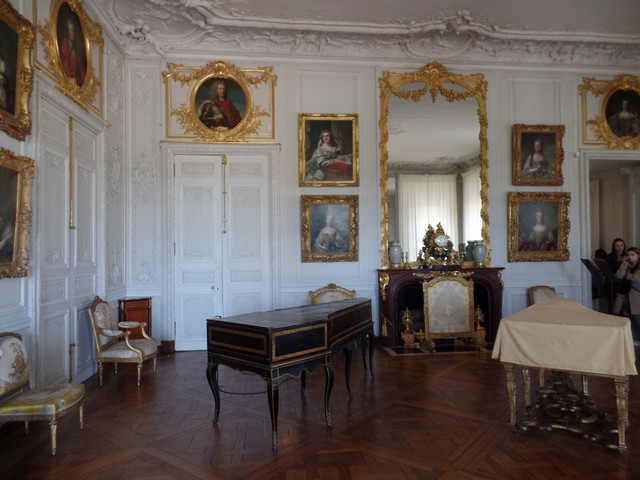
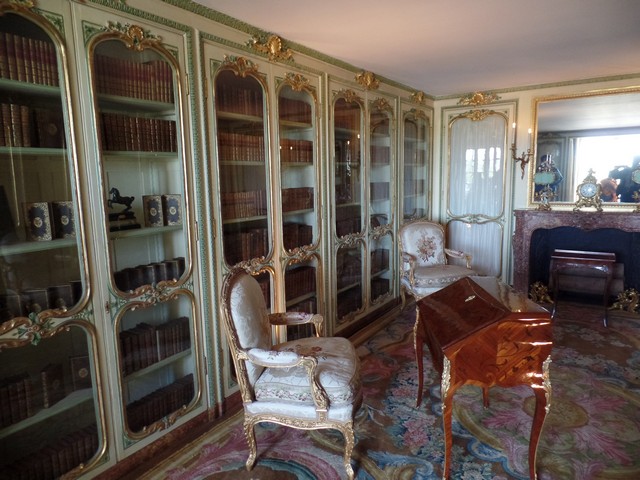
Another staircase, although not as grand as the previous one.
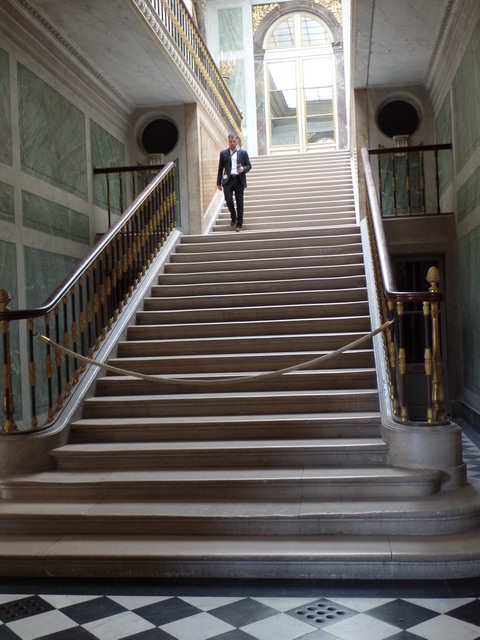
Now, the gardens! Most of the gardens, which cover about 800 hectares, are landscaped in a classic French Garden style, which is based on symmetry and the principle of imposing order on nature. They were laid out on an east-west axis followed the course of the sun: the sun rose over the Court of Honor, lit the Marble Court, crossed the Chateau and lit the bedroom of the King, and set at the end of the Grand Canal, reflected in the mirrors of the Hall of Mirrors. These first pictures are of the part of the garden just to the right of the rear of the chateau, although I'm not sure they have a specific "name". From these you can start seeing the symmetry of the French style.
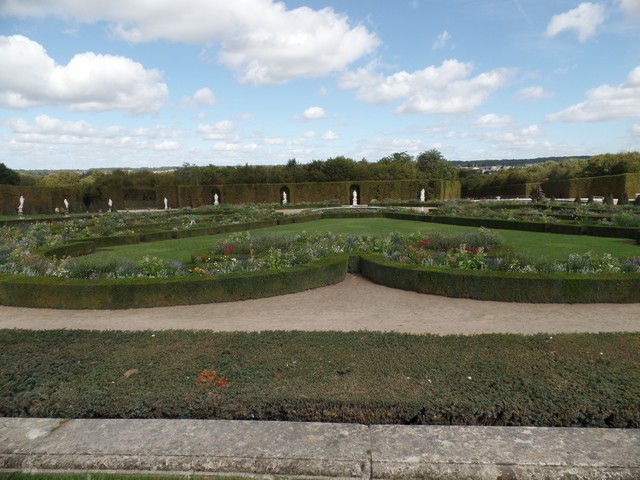
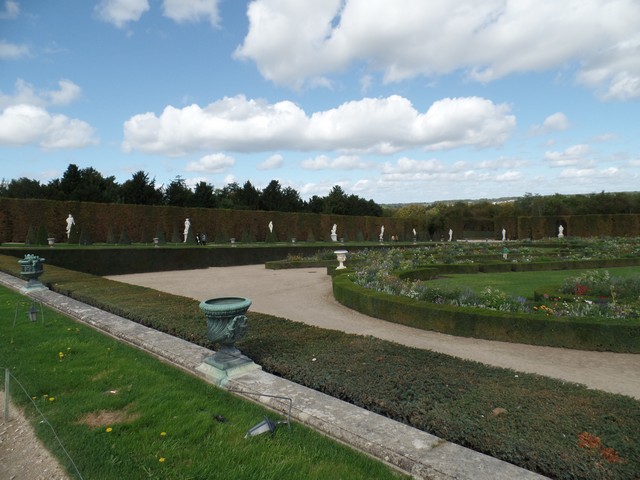
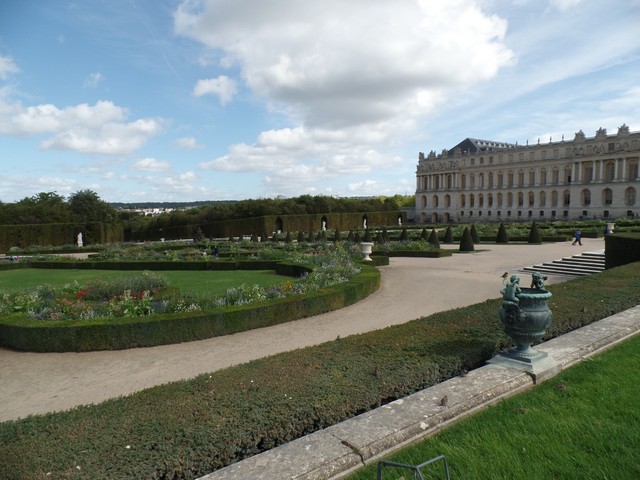
Here we start seeing a picture of the Latona fountain and then down the Royal Alley to the Grand Channel. The fountain is wedding-cake style, designed by Balthazar Marsy. In addition to the goddess Latona are her children, Apollo and Diana. The second and third tiers of the fountain have frogs, while the lowest tier has turtles and alligators. The fountain illustrates the legend of Apollo's mother and Diana protecting her children against the insults of the peasants of Lycia, and calling on Jupiter to avenge them. He heard their plea and transformed them into frogs and lizards.
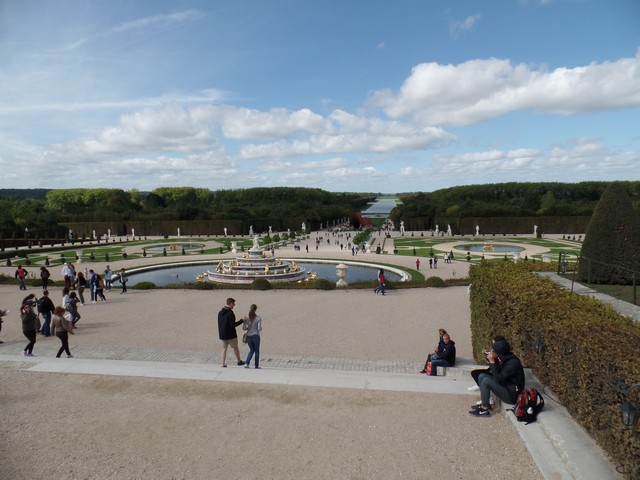
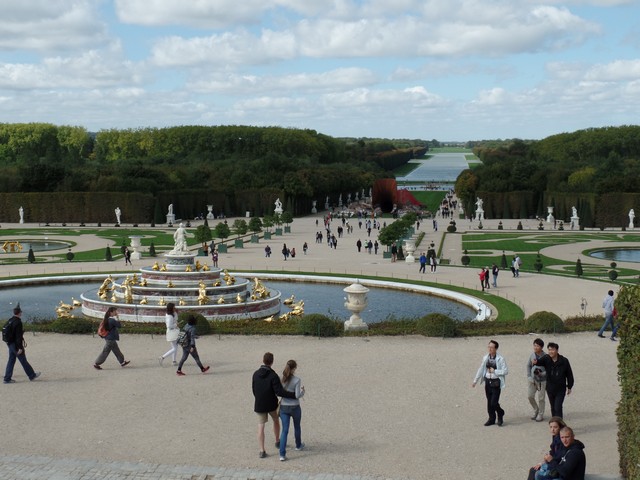
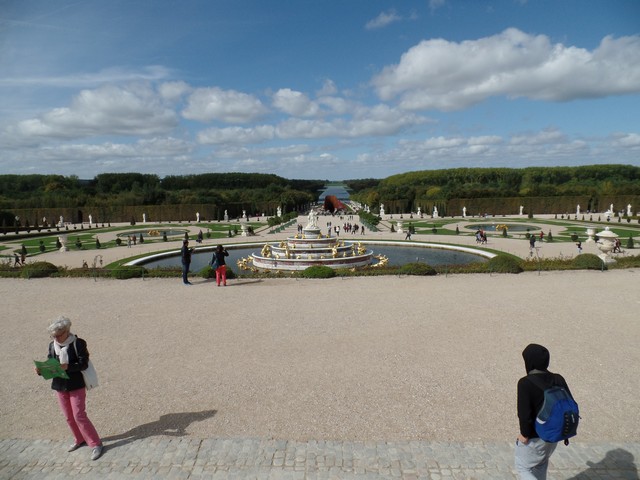
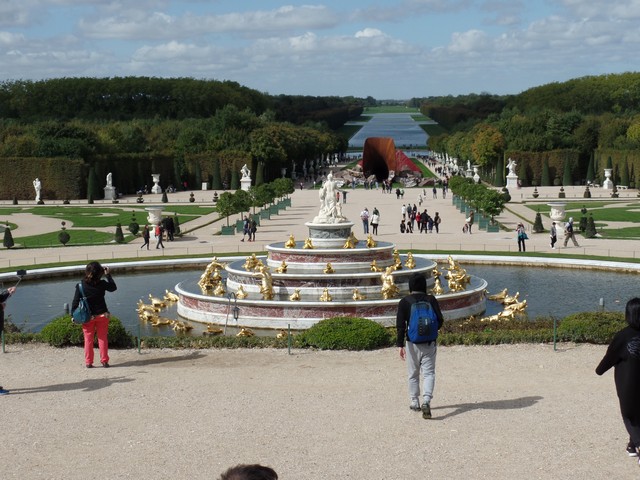
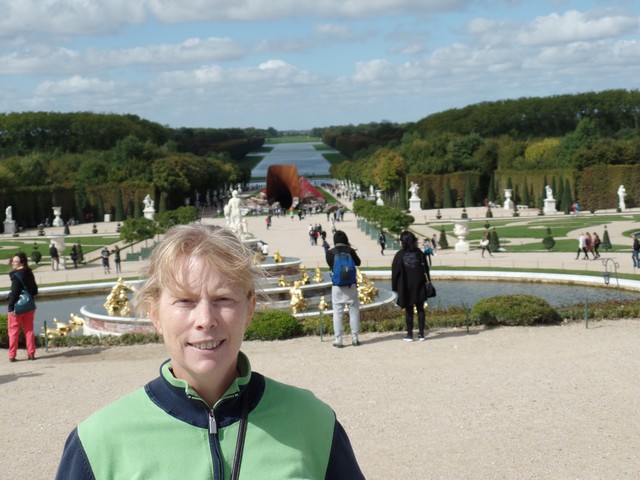
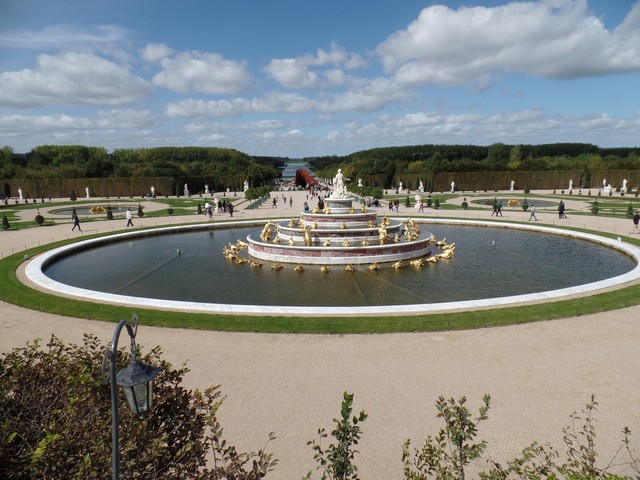
This is looking back to the chateau.
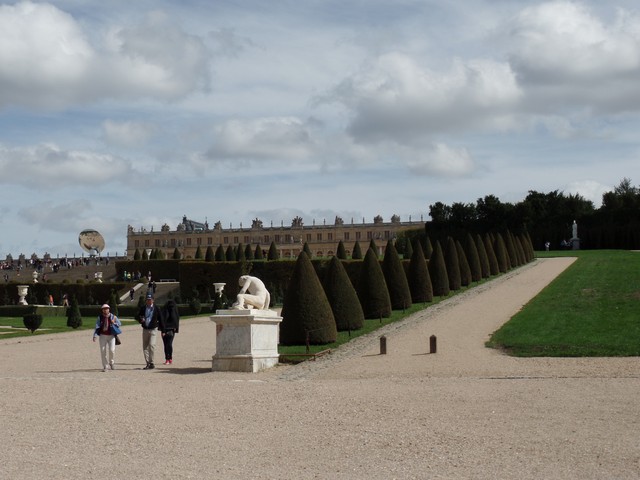
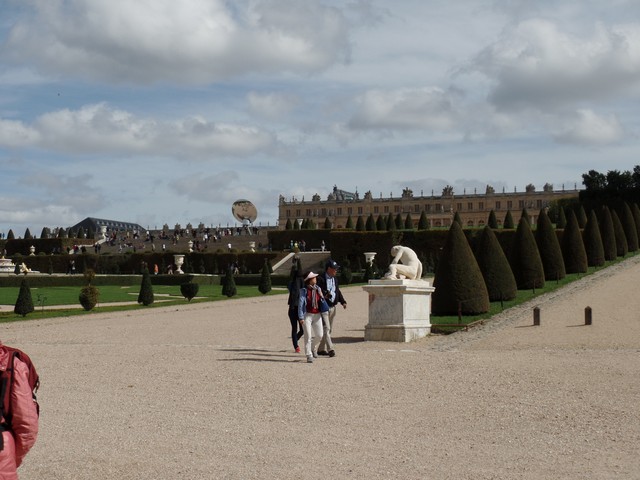
The Saturn fountain was sculpted by Francois Girardon and symbolises the season of winter. Saturn is seated on a throne in the centre, surrounded by small cupids, on an island studded with shellfish.
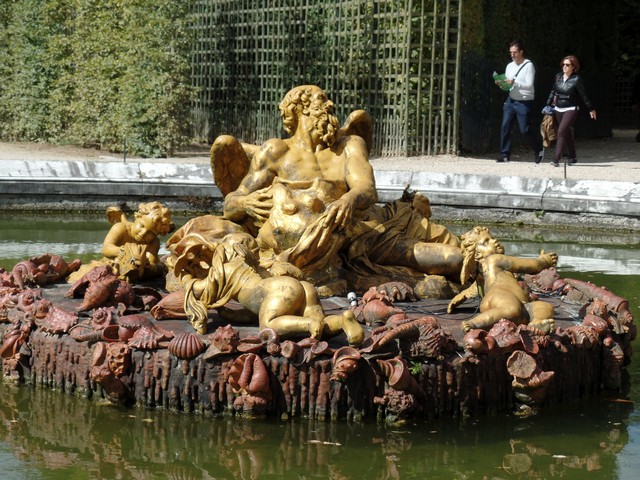
We walked over to another basin, I think it is the Mirror Basin, and this one had a musical fountain show going on. The fountain went for a few minutes along with some music, and then it stopped for a few minutes, then started again.
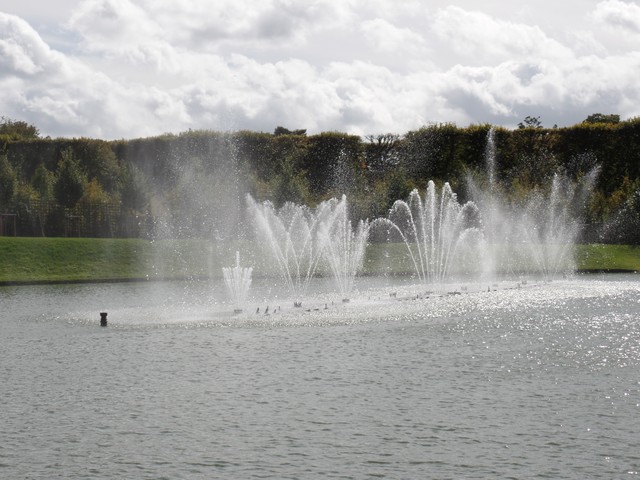
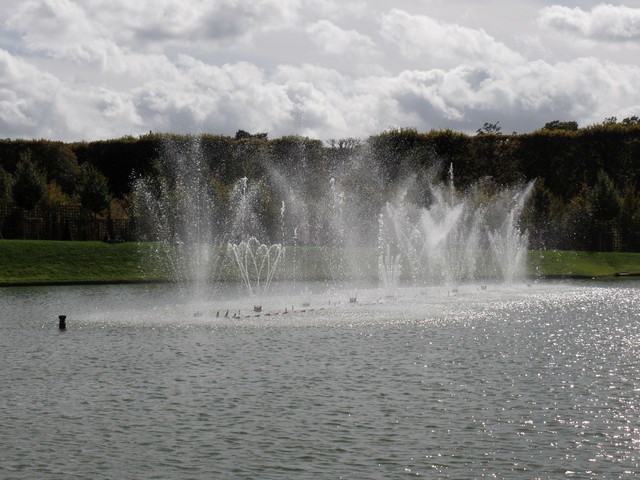
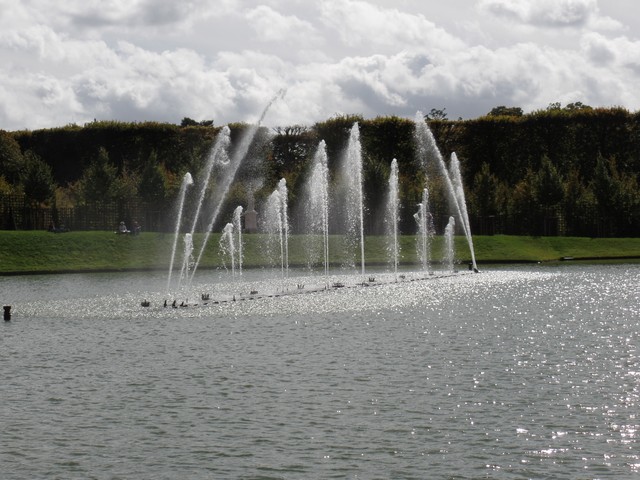
The sign here says this is the Garden of the King (le jardin du roi) although I assume all of the Versailles gardens are the gardens of the king. This was a small, mostly grassy area. It is actually modeled after English gardens, which really are less symmetrical and less "organized" (in my view) than French gardens.
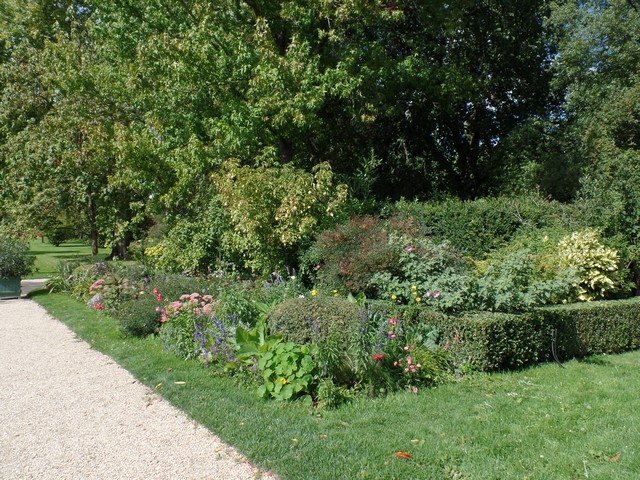
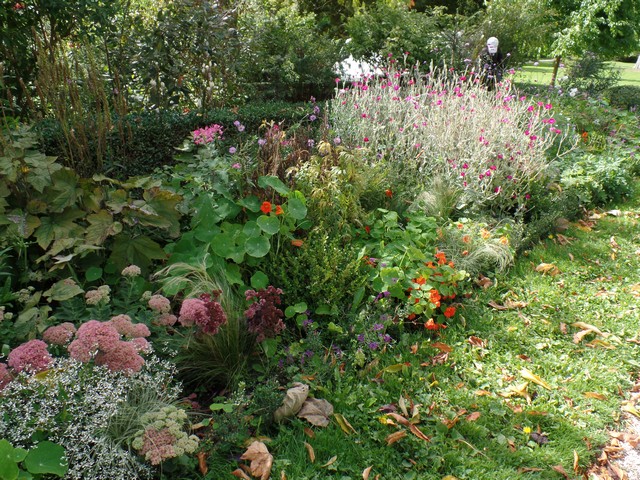
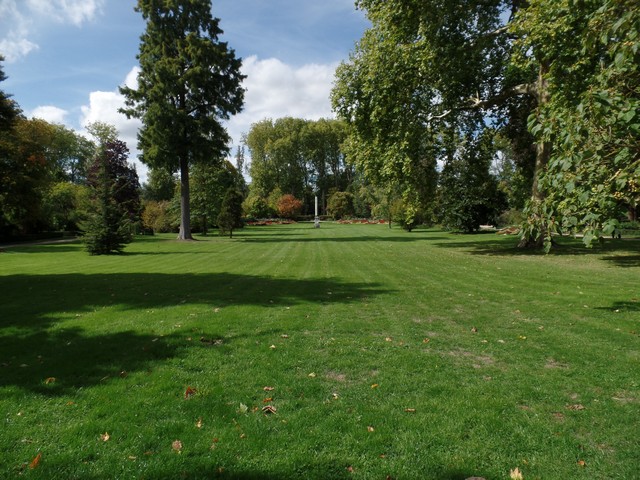
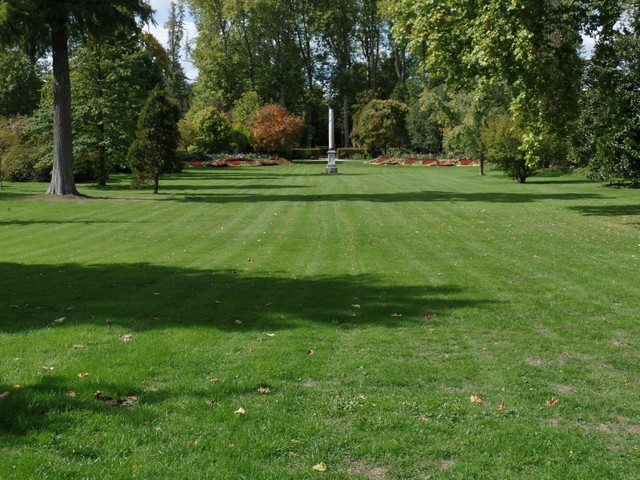
This is the Apollo fountain. A fountain, the Swans Fountain, already existed here starting in 1636, under the reign of Louis XIII. Louis XIV decorated it with Apollo on his chariot. It is inspired by the legend of Apollo, the Sun gold and emblem of the king.
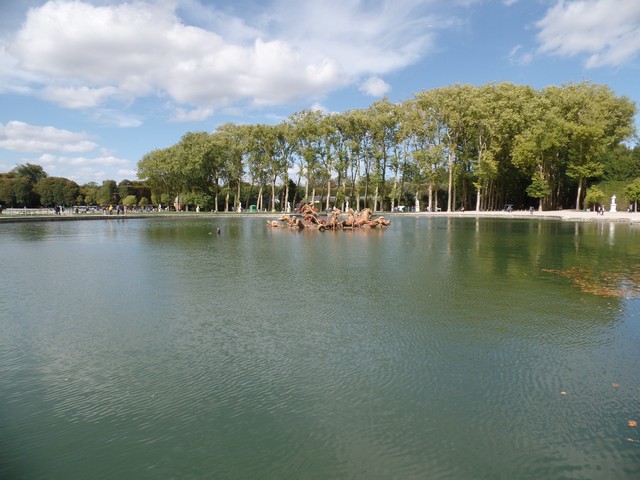
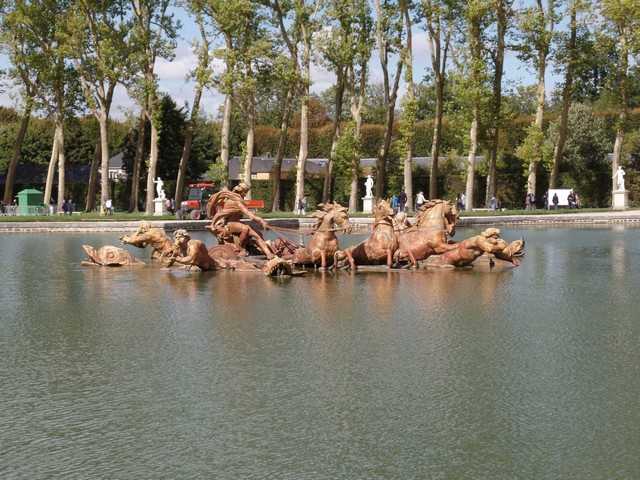
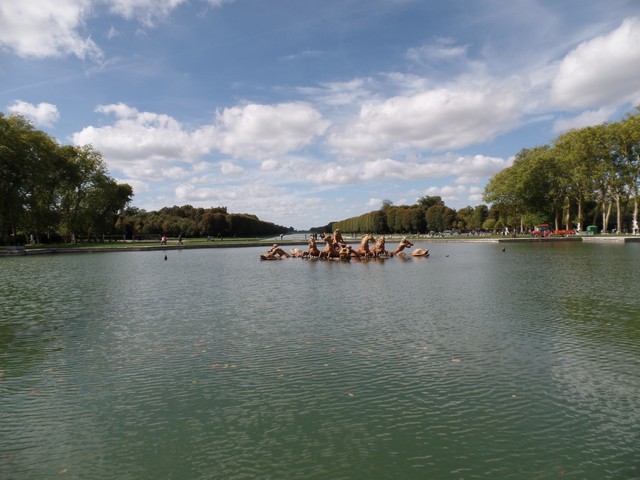
Again, another view back up the Royal Alley up to the chateau.
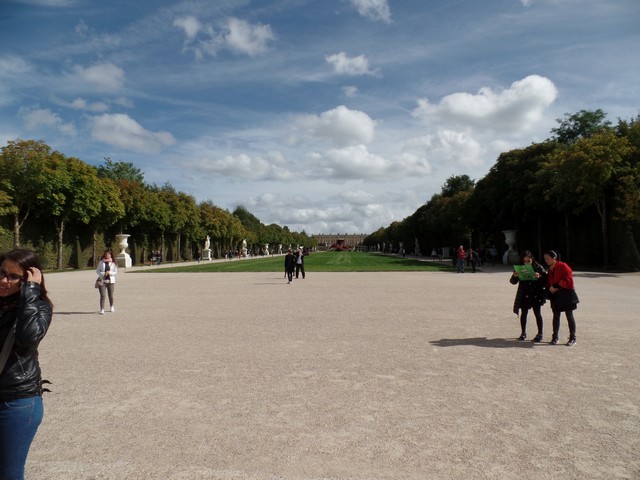
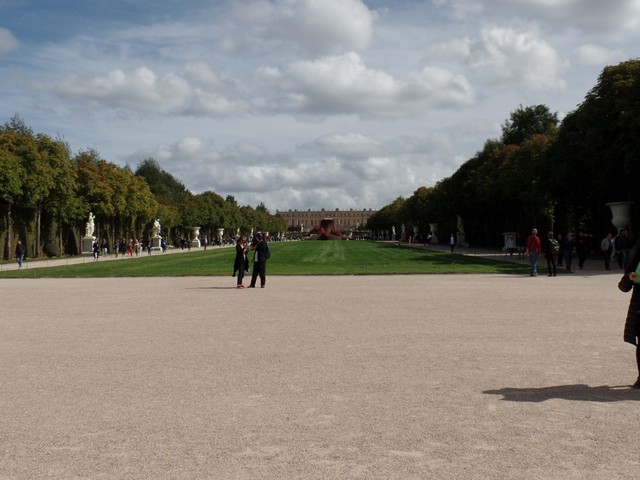
The fountain of Flora, Roman goddess of flowers, gardens and spring, symbolizes the first season of the year. Sculpted by Tuby, she is represented with a crown of flowers in the centre of the fountain.
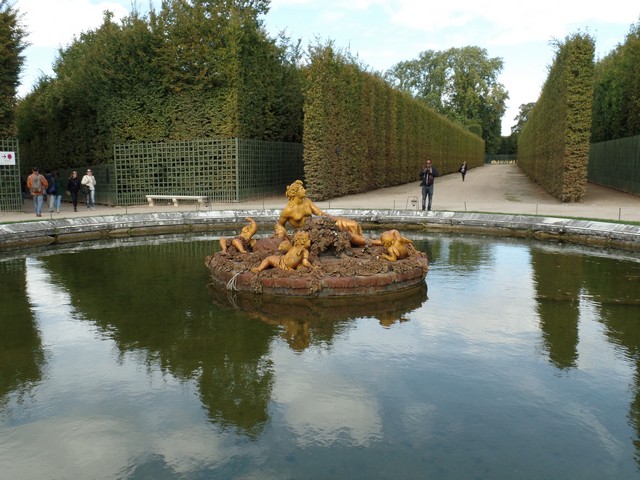
The Ceres Fountain was laid out between 1672 and 1679 by Thomas Regnaudin, after a drawing by Charles Le Brun. Ceres, the Roman goddess of harvests and corn, is seated on a bed of corn stalks, accompanied by cornflowers and roses. Symbolizing summer, the fountain forms a set with those of Bacchus, Flora and Saturn who represent the three other seasons.
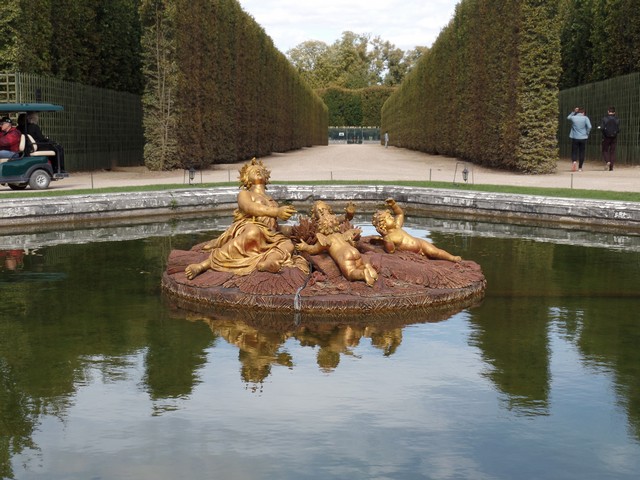
A nice view of the massive size of the chateau.
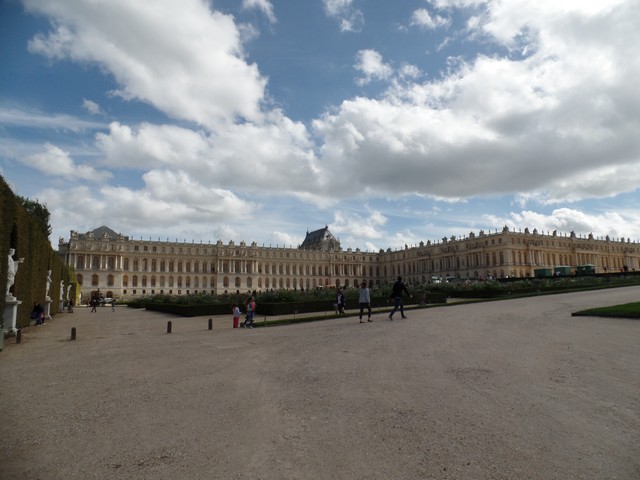
The Dragon Fountain depicts one of the episodes of the legend of Apollo: the Python snake killed by an arrow shot by the young Apollo. The reptile is surrounded by dolphins and Cupids armed with bows and arrows riding on swans. The principal water jet rises twenty-seven meters into the air. On either side of this fountain restored in 1889, paths lead to the two Groves, France Triumphant and the Three Fountains in the west.
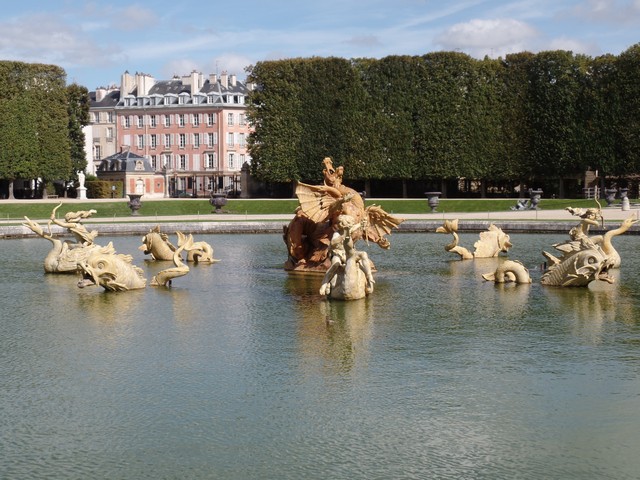
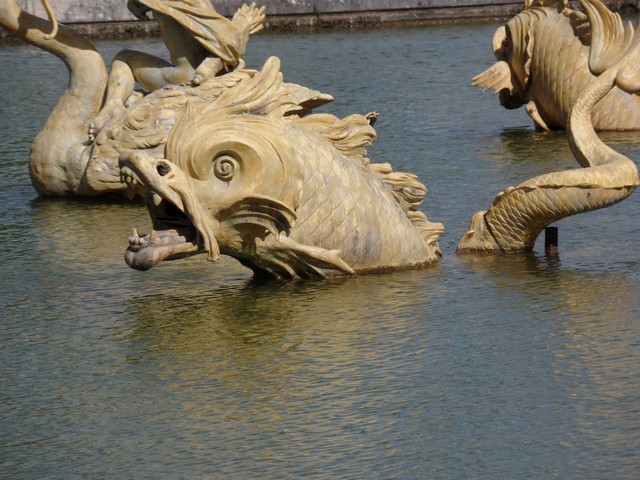
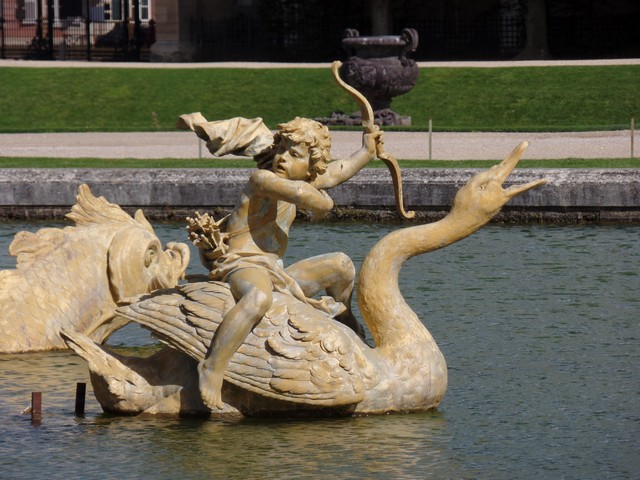
At the far side of the gardens, we ran across the Neptune Basin. It is HUGE! There are several different statues around the edges and then the large sculpture of Neptune in the middle. It was built under the direction of Le Notre between 1679 and 1681. It was modified in 1740 to add the sculptural decoration. While we didn't get to see them (it was windy and none of the fountains really were running), it features ninety-nine water effects.
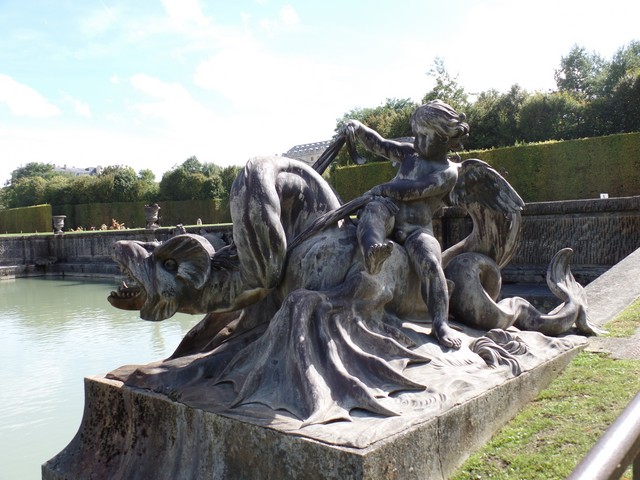
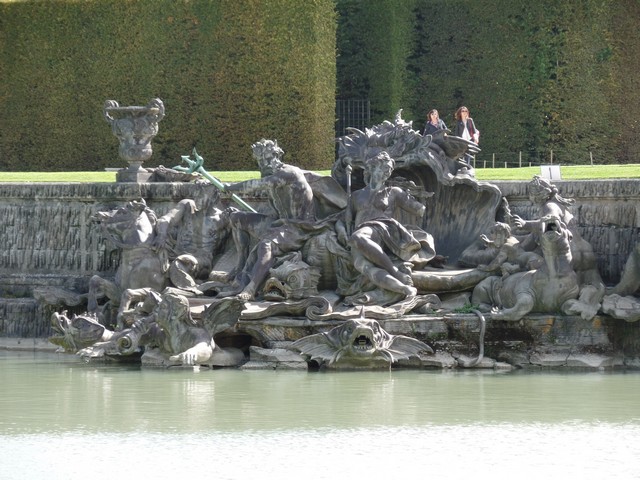
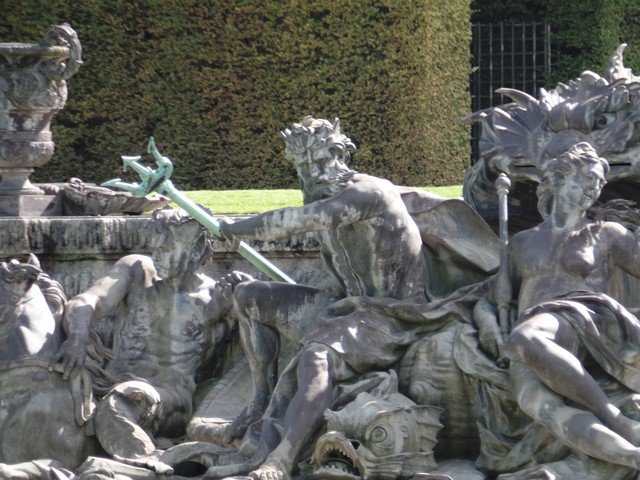
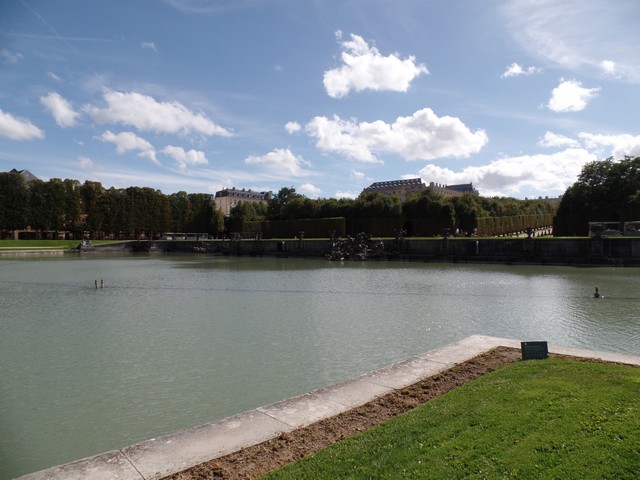
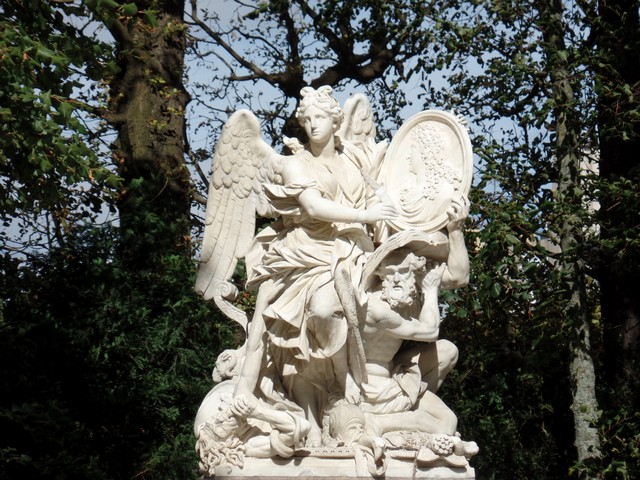
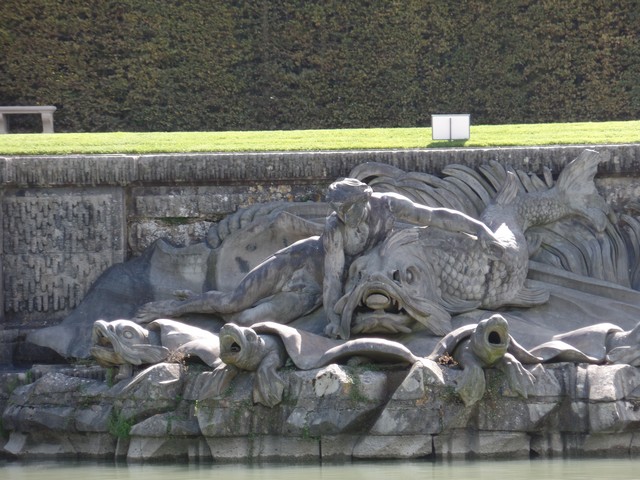
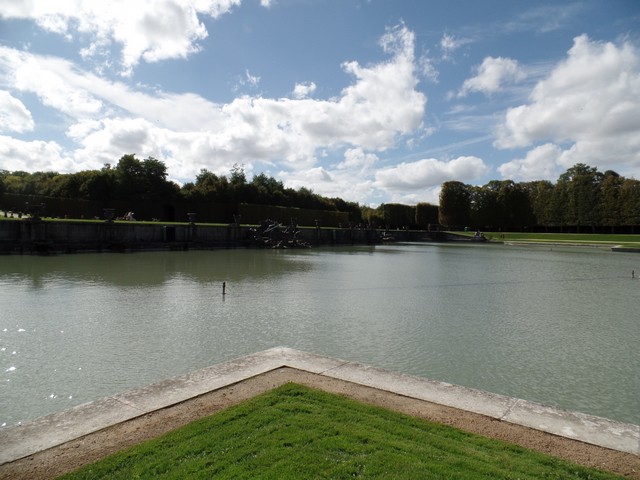
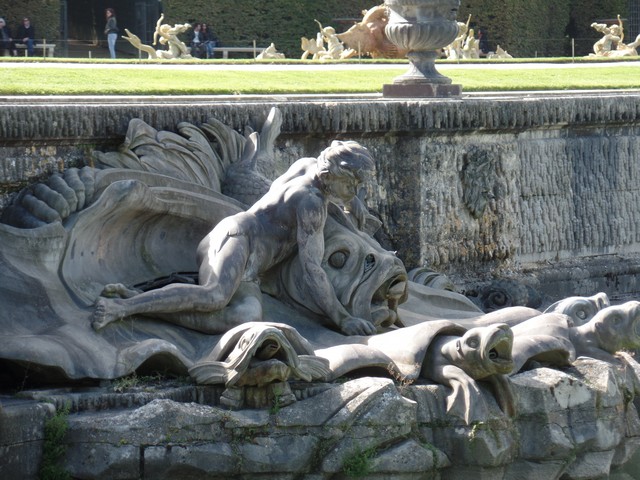
Back up at the chateau, trying to show the statues that are around the top edge.
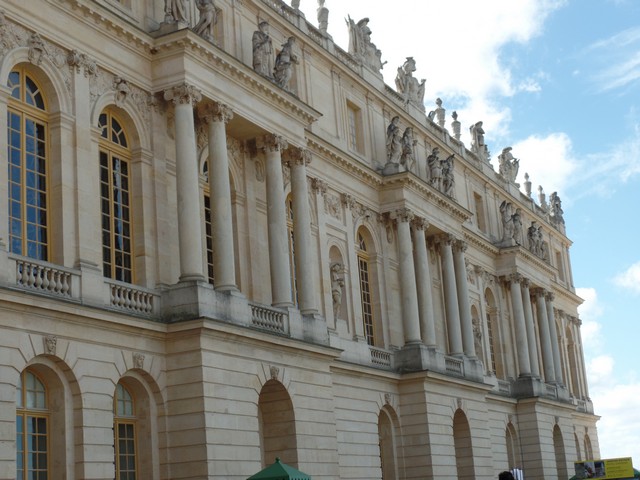
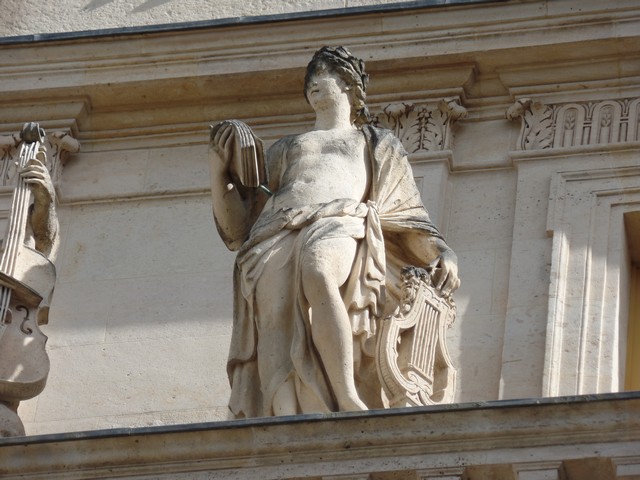
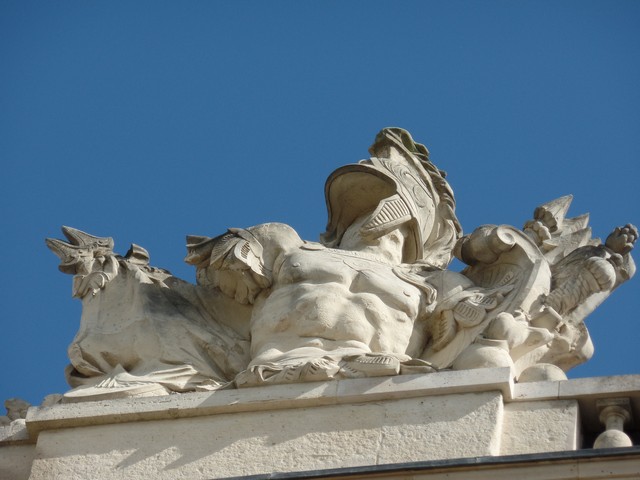
Dinner was at a restaurant that was recommended by our friend, Manu ... Le Galopin. The chef/owner, Romain Tischenko, took over this bistro in 2011 after winning Top Chef France in 2010. His brother also works there as the Sommelier.
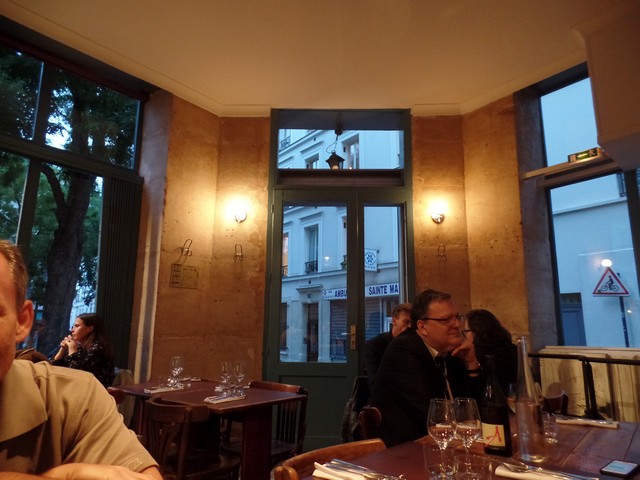
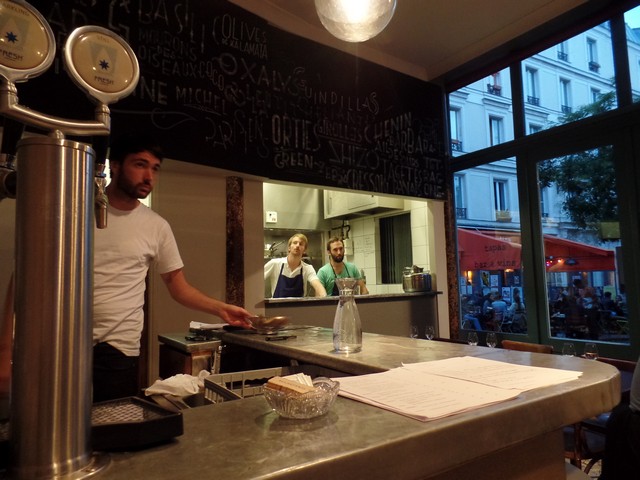
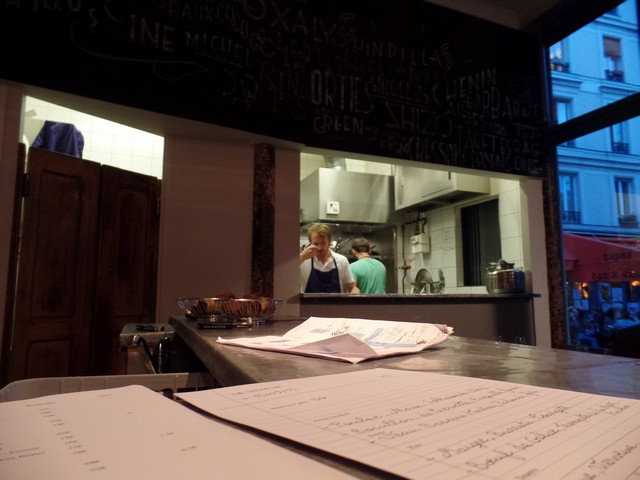
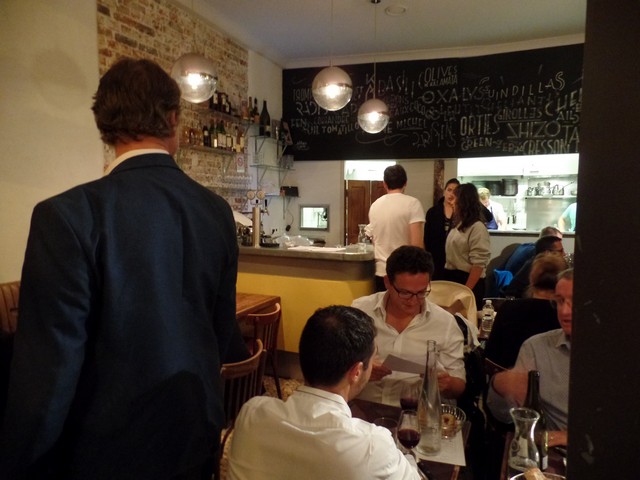
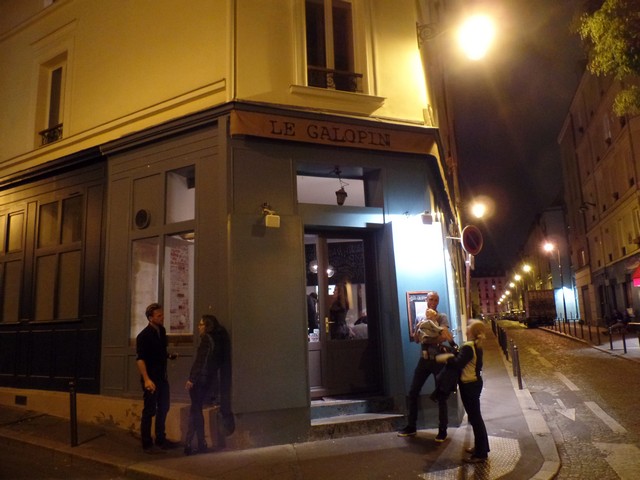
We went with an Organic white wine (which to us seemed a little fizzy, like a Vino verde).
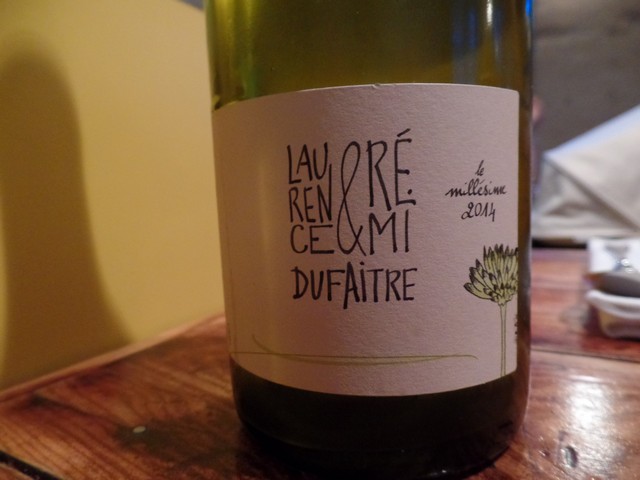
The menu is a 7-course tasting menu and is the only menu (there is no a la carte ordering).
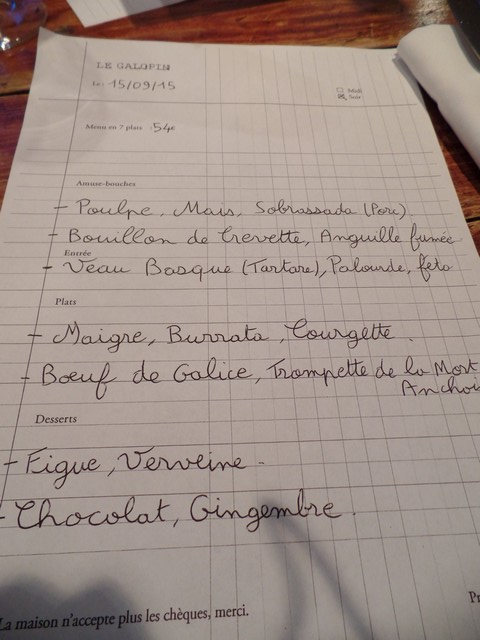
It starts with 2 Amuse-bouches (these are tiny hors d'oeuvre's which normally are not on the menu and just come free from the chef). The first one, per the menu, is Octopus, Corn, and Sobrassada (which is a raw, cured sausage from the Balearic Islands off the East coast of Spain.
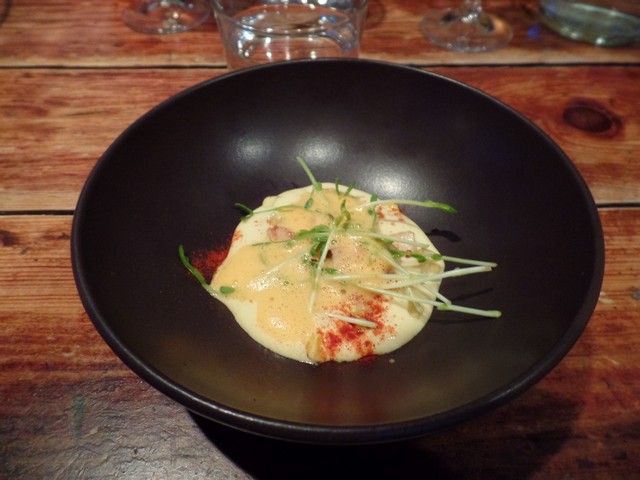
The second amuse-bouche was Bouillon de crevette, anguille fumee, which means a Shrimp broth with smoked Eel.
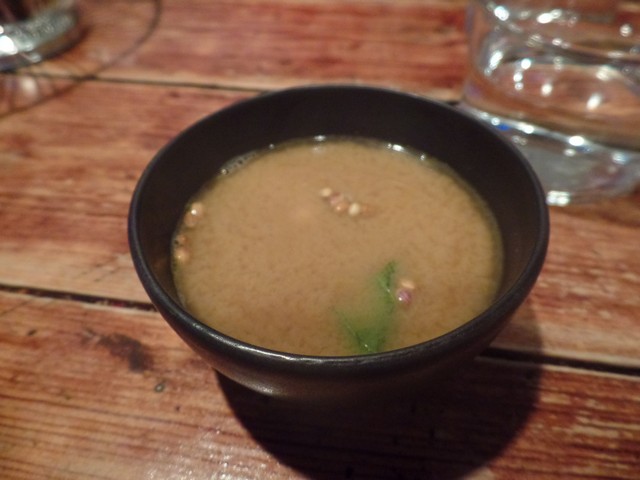
Then came an hors d'oeuvre, which was Veau tartare with clams, white beans, and feta
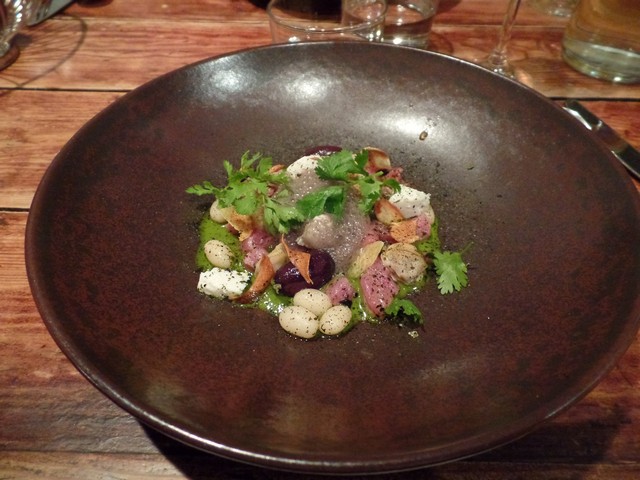
Then came a small fish plate, which is a fish called "maigre" which the closest thing I can get in English is Croaker. With it was burrata (a fresh Italian cheese made from mozzarella and cream) and zucchini.
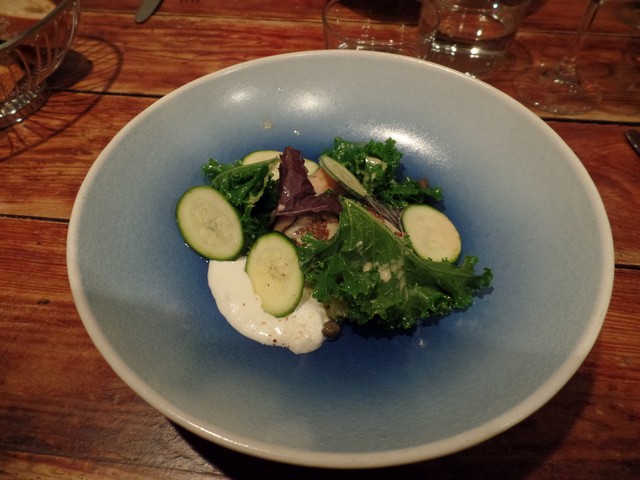
There was one "meat" dish, which was "Boeuf de Galice", or beef from a portion of Spain called Galice, which is directly north of Portugal. It came with mushrooms and anchovie. The menu called the mushrooms "trompette de la mort" which are black chanterelle mushrooms (literal translation: trumpet of death). I'm not sure it was these mushrooms though, since the mushrooms were not black :-)
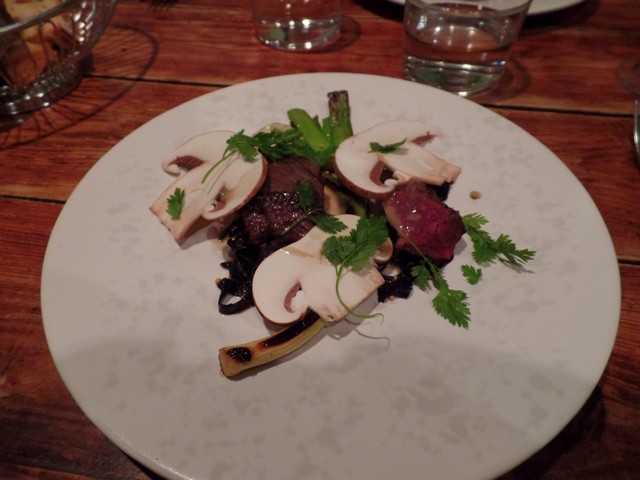
Dessert was figs with verbena cream and a sorbet
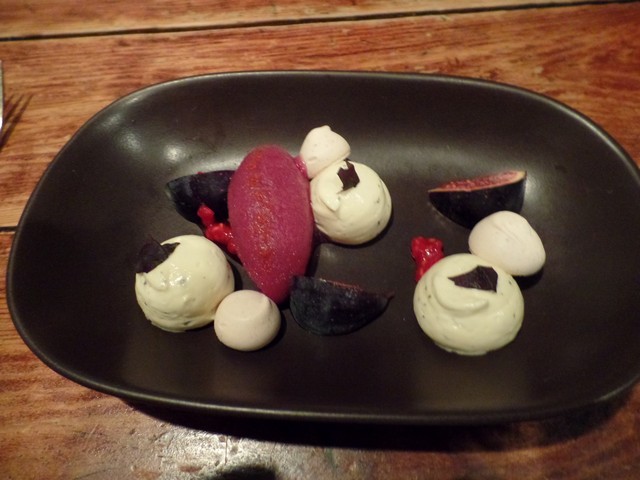
There was a second dessert with chocolate sheets, caramelized ginger, with some blackberries and cream.
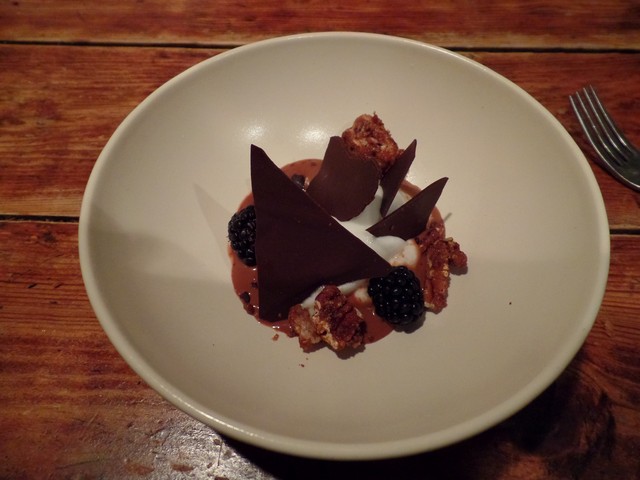
And then, of course, an espresso
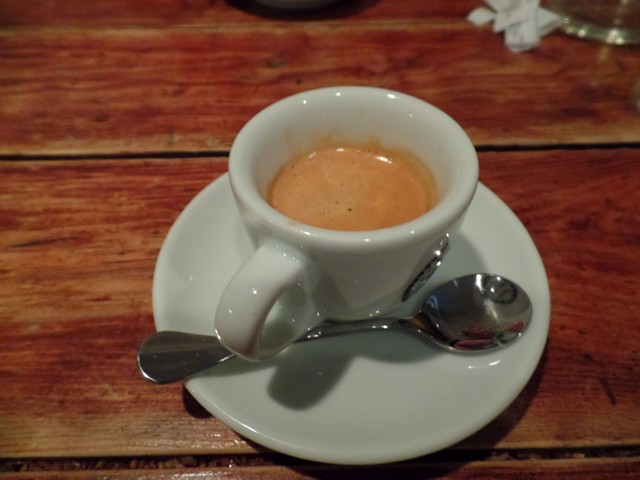
Then a few final pictures of Canal St. Martin at night. Construction of the canal was ordered by Napoleon I in 1802, in order to create an artificial waterway for supplying Paris with fresh water to support a growing population and to help avoid diseases such as dysentery and cholera. It connects the Canal de l'Ourcq to the Seine River. It was almost filled in/paved over during the 1960's but instead, a portion of it now runs underground (between Place de la Bastille and Place de la Republique. Today, the canal is a popular destination for Parisians and tourists who watch the barges navigate the series of locks and road bridges.
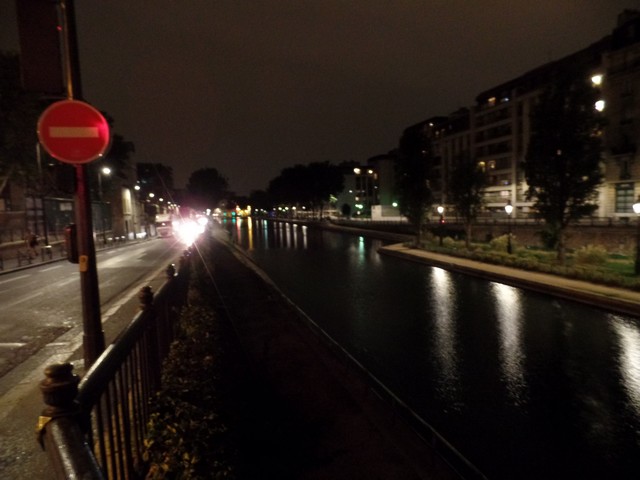
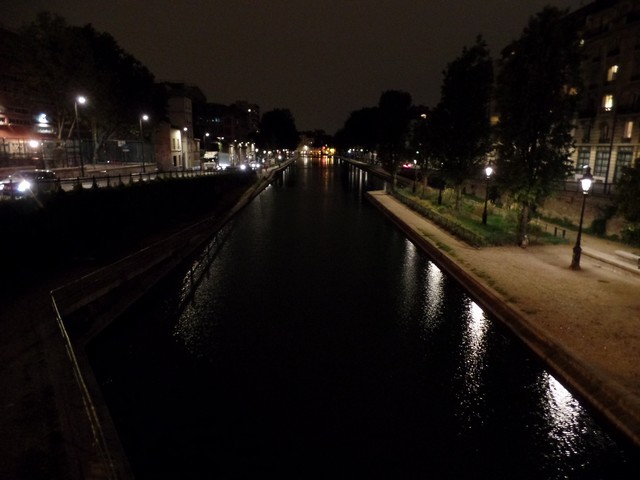
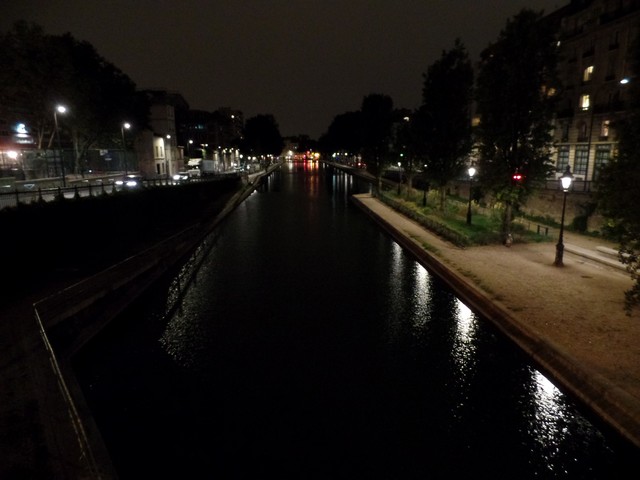
Go to Day 6